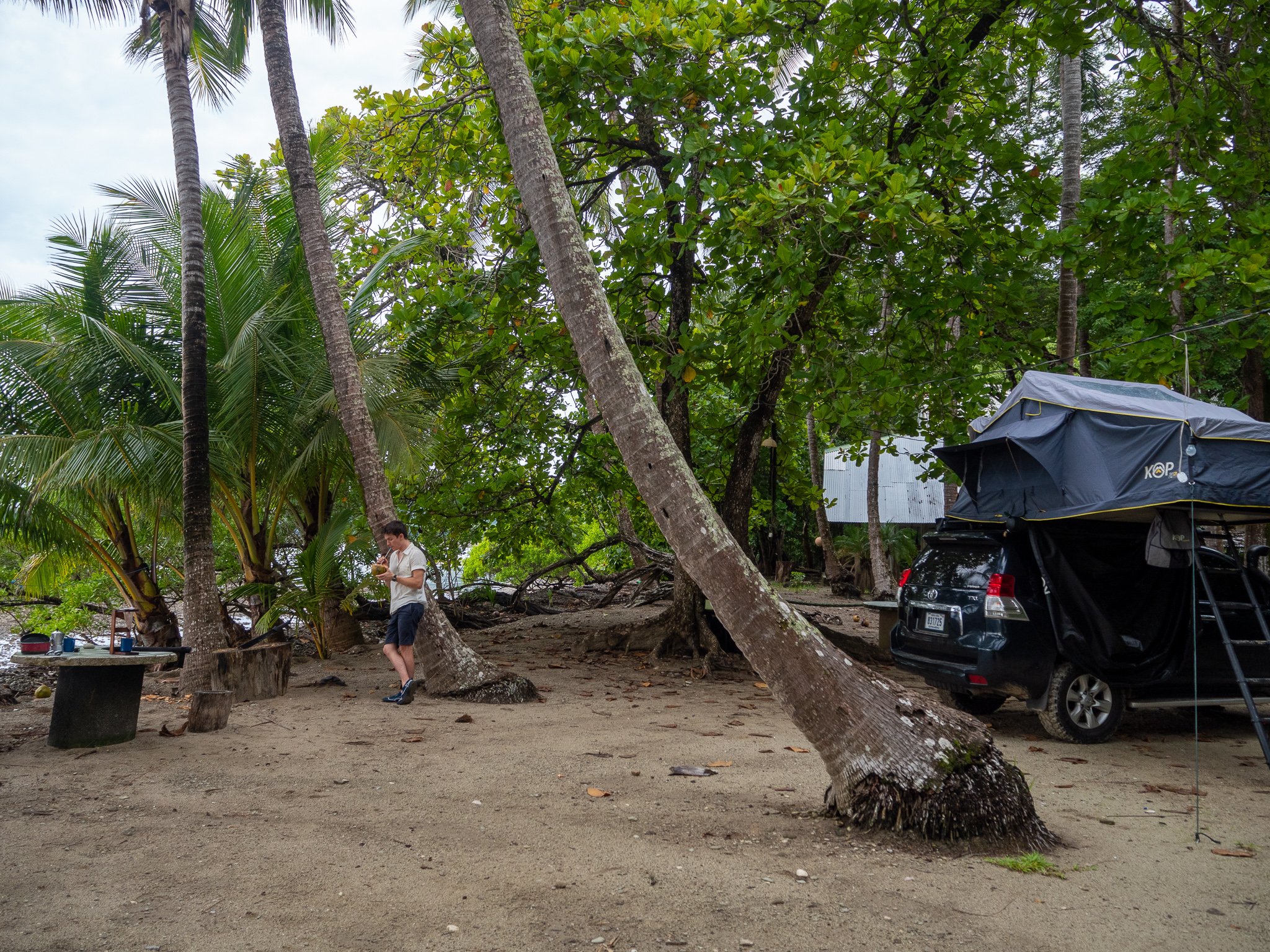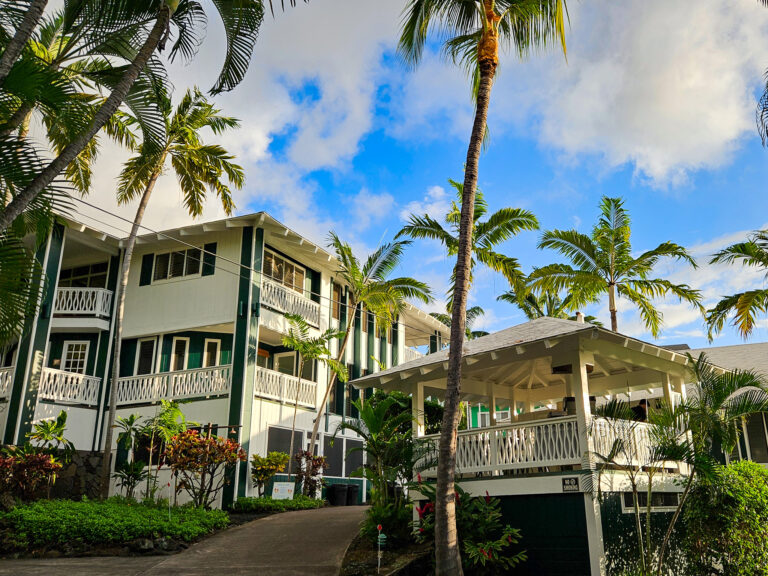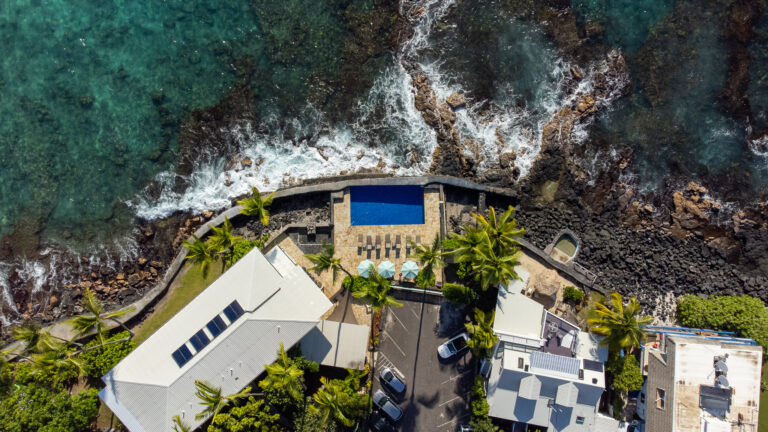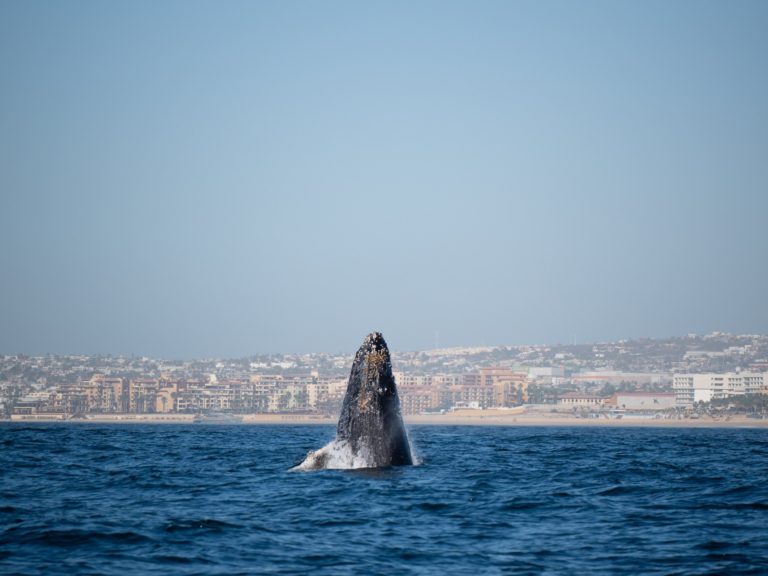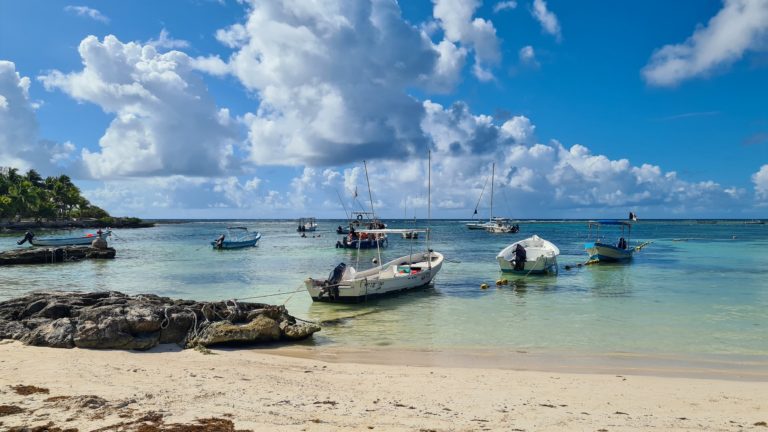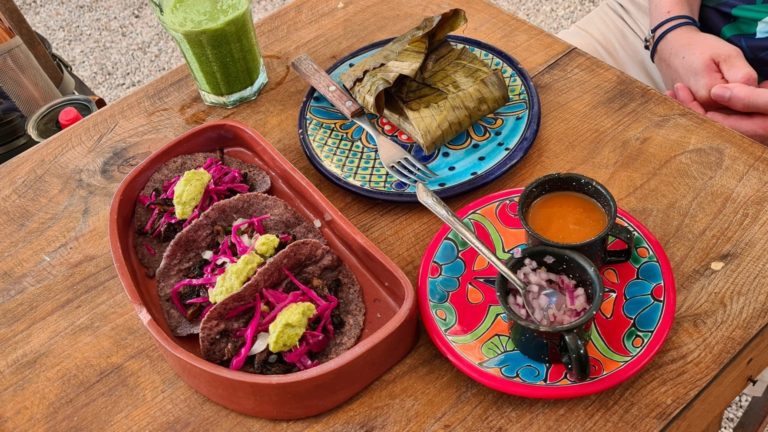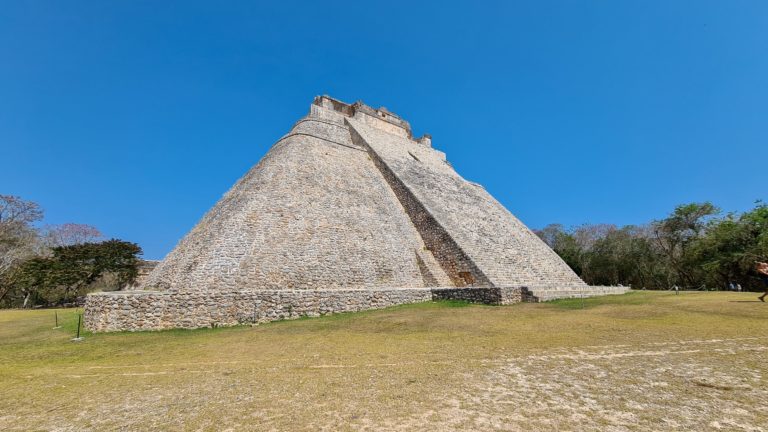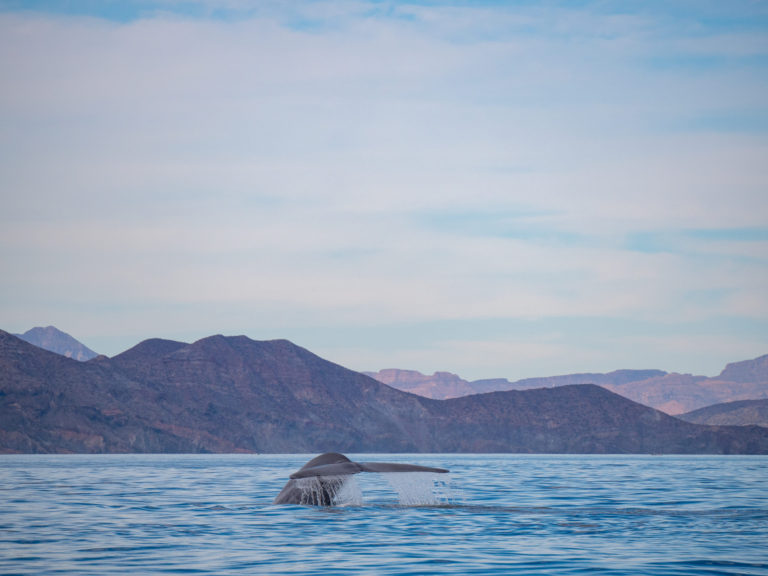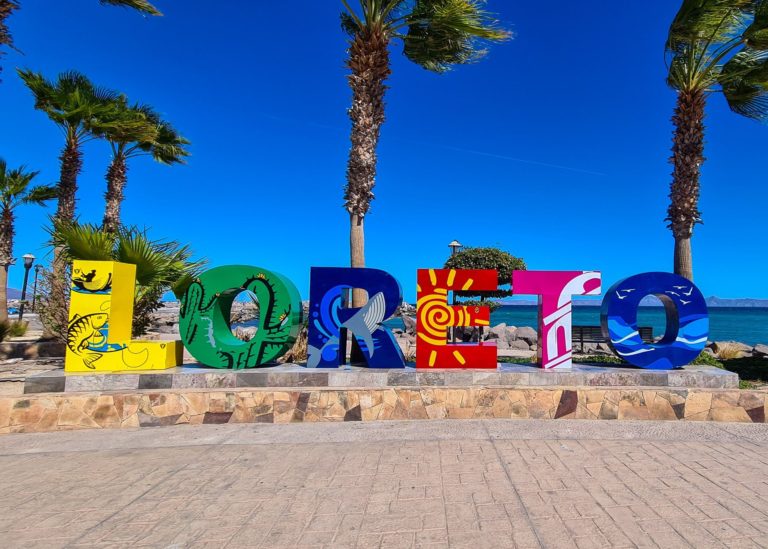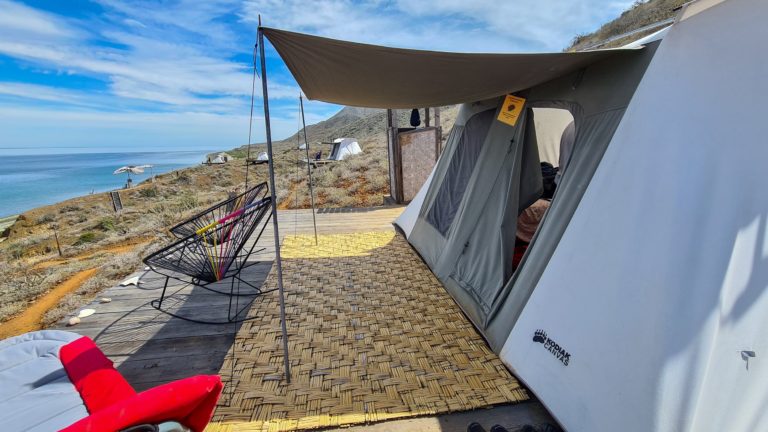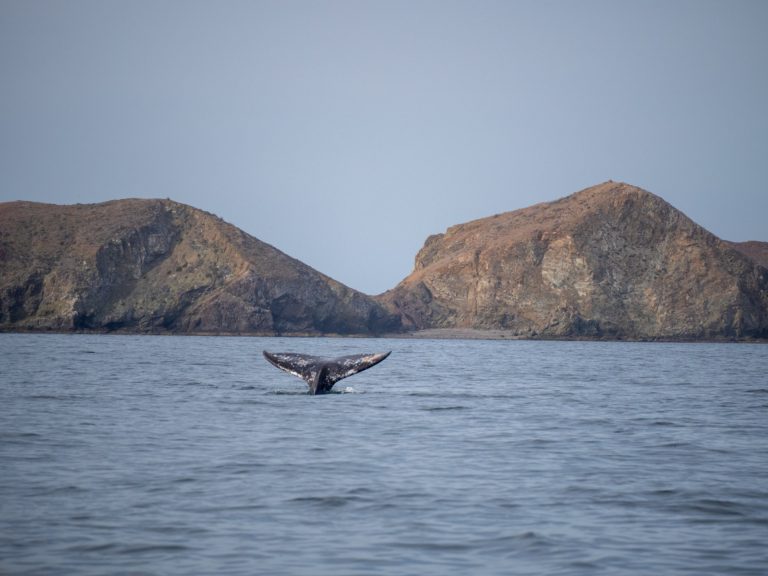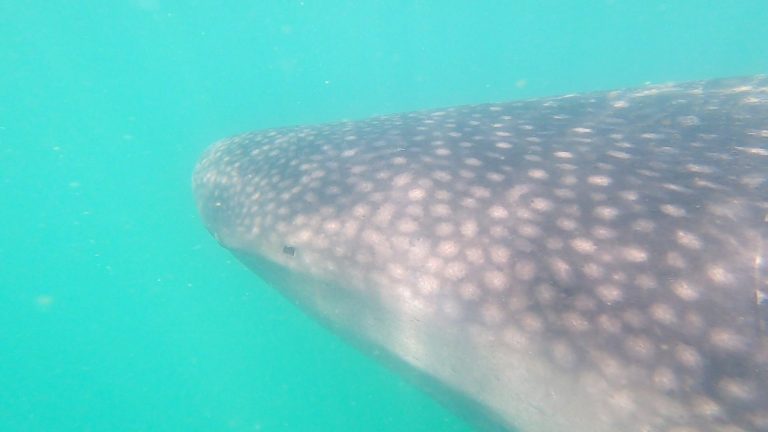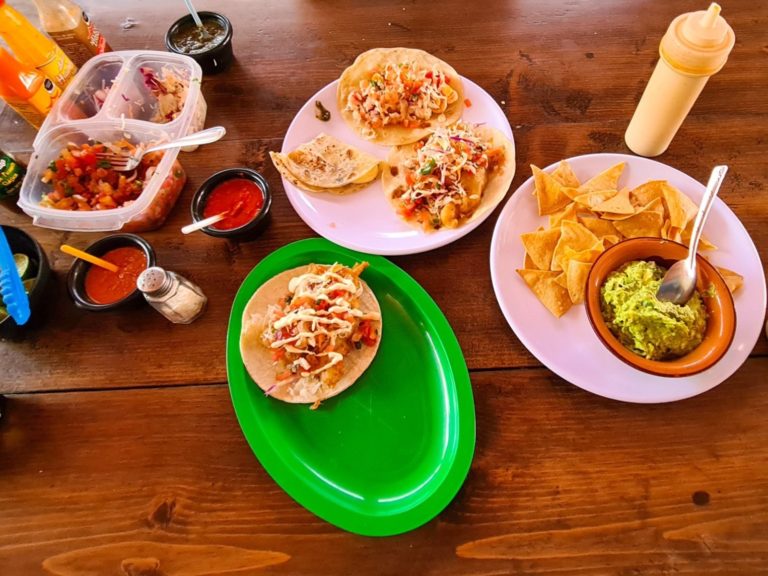The Ultimate Guide to Camping in Costa Rica
A complete guide to Costa Rica’s best campsites and everything you need to know before camping in Costa Rica in a tent or camper.
(Updated 2024)
This post may contain affiliate links, which means we might earn a small commission on anything purchased through these links at no extra cost to you. Learn more on our Disclaimer page.
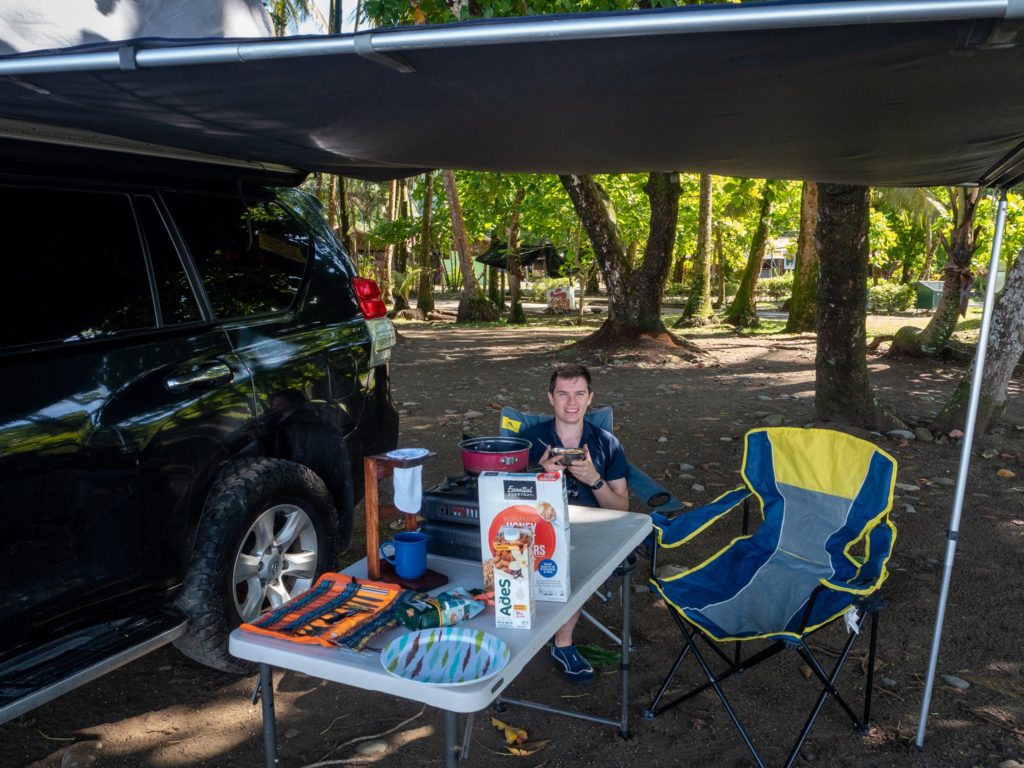
Camping in Costa Rica is one of the best ways to authentically see the country. Being able to sleep in a different location every night is incredibly freeing and allows you to truly get off the beaten path. Camping is even better if your tent is combined with your transport, like in a 4×4 camper rental, as you have your very own home on wheels. We’ve camped in a camper car in Australia, New Zealand, and now Costa Rica, and can truly say it’s an experience you’re going to want to add to your bucket list. There are many ways to camp in Costa Rica and we’re going to go through the pros and cons of them all, as well as detail all the best campsites in this article.
Time needed: 7-14 days for a perfect vacation while a month is best to see the whole country.
When to go: December to April for the best weather, May to July for shoulder season and August to November for the quietest sites (but there is more rain).
Language: Spanish.
Currency: Costa Rican Colón.
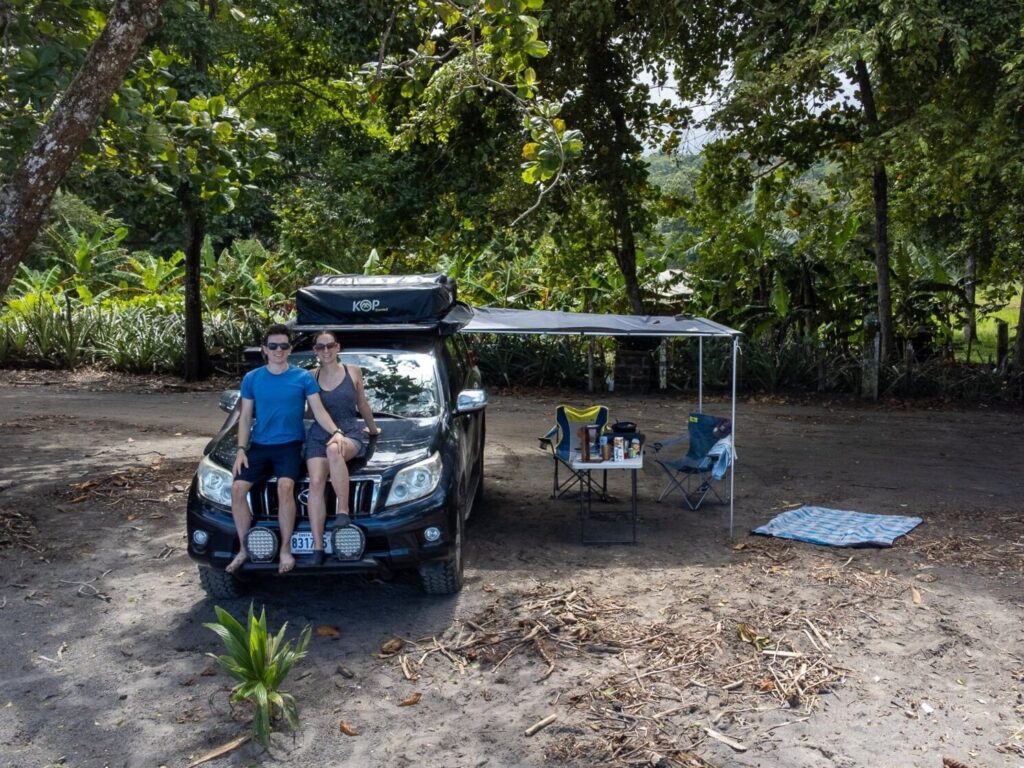
Is Costa Rica good for camping?
Yes! Costa Rica is one of the best destinations for camping in the world. As one of the most biodiverse countries on the planet, Costa Rica is home to a large variety of unique plant and animal species, and there’s no better way to immerse yourself in nature than camping. Featuring dramatic cloud forests, volcanic landscapes, sprawling beaches and lush rainforests, Costa Rica is a camper’s paradise and there are a variety of campsites available to suit every need or fancy.
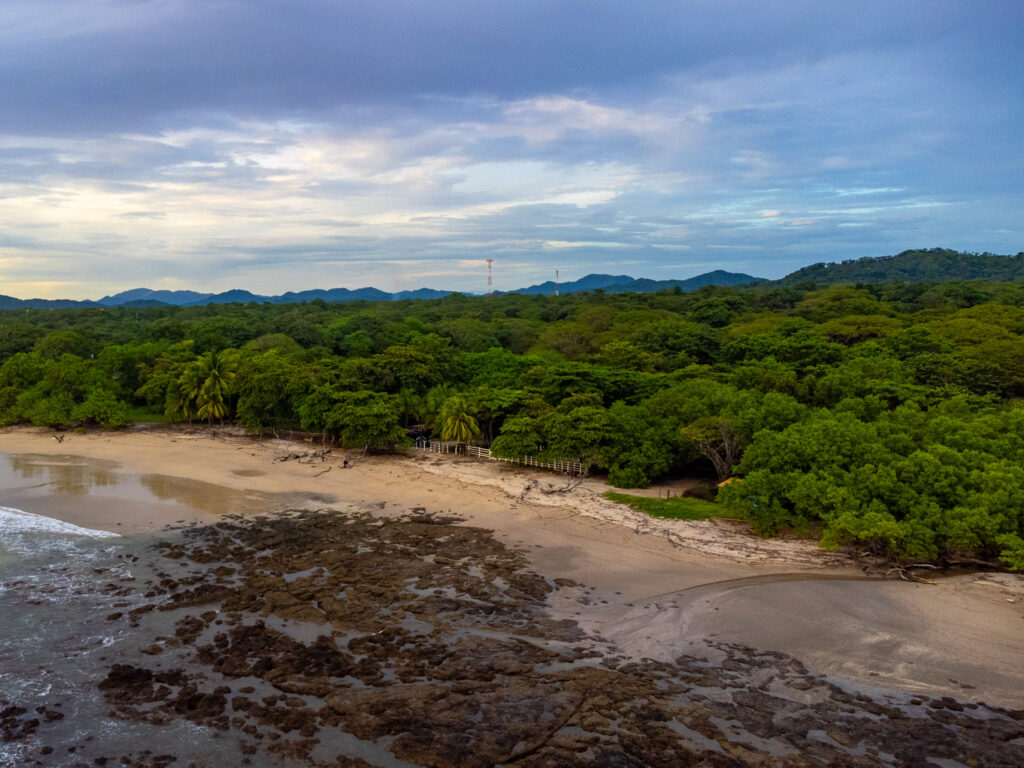
Why Camp in Costa Rica?
There are many reasons to camp in Costa Rica, not least because you can wake up to a new view every morning. The landscapes here are so diverse and it’s great to explore further afield and see a variety of locations. Camping also gives you complete control over your itinerary, allowing you to go wherever you like and stay spontaneous. Camping in Costa Rica is also one of the most affordable ways to see the country. Many campsites are free, making camping in Costa Rica a super budget-friendly accommodation option.
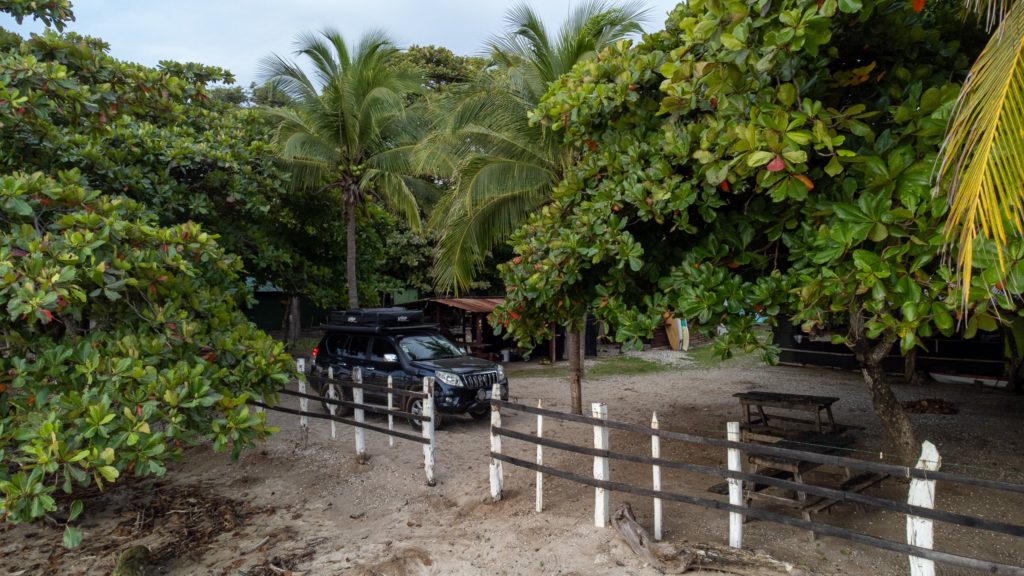
Types of camping in Costa Rica
Overlanding is popular in North America and it’s not uncommon for travellers to drive their own car down from USA, Canada and Mexico, or to buy a car once they arrive in Central America. It’s possible to drive your car across borders and explore multiple Central American countries, as well as just within Costa Rica.
Most travellers to Costa Rica who want to camp will hire a vehicle. The type of rental will depend on your camping preference. The cheapest way to camp Costa Rica is to bring or buy a tent and hire a regular car rental. There are several drawbacks to this option, which we’ll go into more later, but the main ones are that this limits your ability to go off-road unless you hire a 4×4 and you’ll be camping on the ground.
Hiring a car that you can camp in is a great middle-ground option for those who want a bit more comfort than tent camping, while still living surrounded by nature. Camper cars generally come in two styles: the inside is converted with a bed and sink, or there’s an attached rooftop tent. The first is typical of brands like Spaceships which we’ve used in Australia and New Zealand. These cars are typically family-sized cars and as such have no 4×4 ability. The latter type of car, a 4×4 with a rooftop tent, is much more suitable for Costa Rica. There aren’t many companies that offer 4×4 camper cars with a rooftop tent in Costa Rica, but you can’t go wrong with Nomad America. All your camping, cooking and washing gear is included and there’s an option to take their camper cars throughout Central America too.
Campervans are another option and popular with those who like camping on vacation. There are a couple of companies which offer well-equipped campervans in Costa Rica, but they have a few limitations. They are much bigger than a car, can’t go off-road and are generally more expensive.
Read next: Road-tripping Costa Rica in a 4×4 Camper Rental with Nomad America
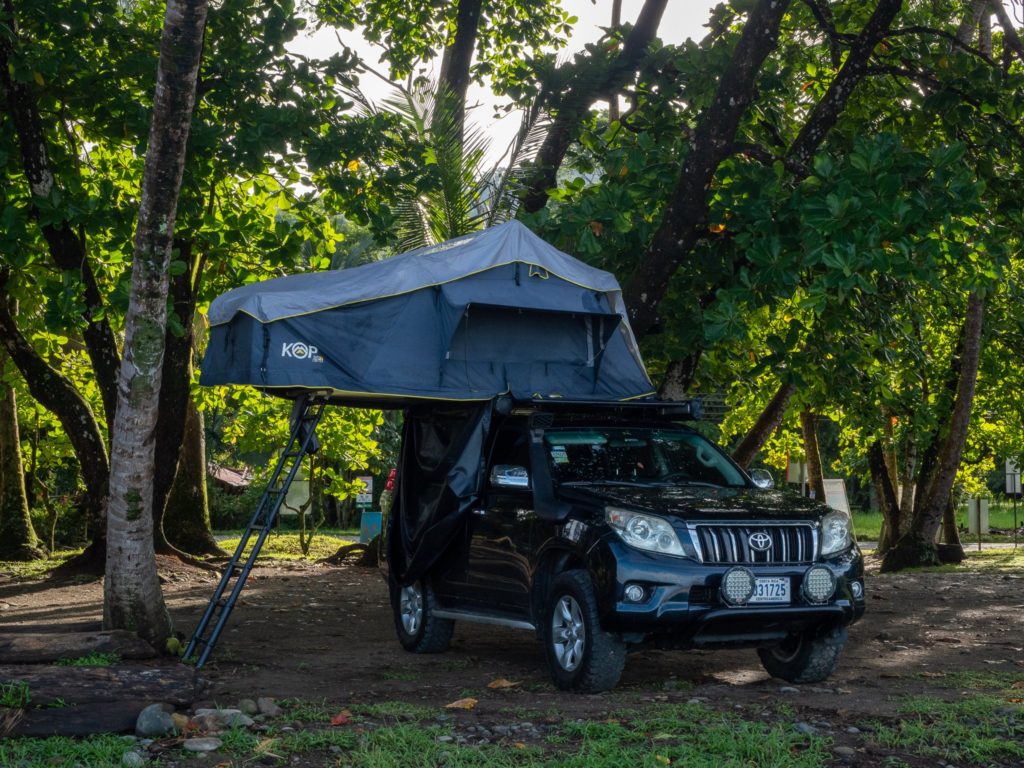
When to camp in Costa Rica
Camping in Costa Rica is great all year round but there may be a few differences to your experience depending on the time of year you visit. Dry season in Costa Rica runs between December to April. Campsites in the dry season can be much busier than in wet season, so it’s important to factor this into your plan. Whereas your main concern in the rainy season, which runs between July to October, is going to be the weather. Heavy rains can be frequent, causing flooding and road washouts. As a camper, rain can be an unpleasant experience and you may spend a lot of time feeling soggy. To avoid the crowds and the worst of the rain, consider visiting in shoulder season. While you may experience infrequent showers in the afternoon or evening, it’ll be a lot drier. We visited in June and found we could often get the tent up before the rain set in on an evening, or an afternoon shower would clear up before it was time to cook tea.
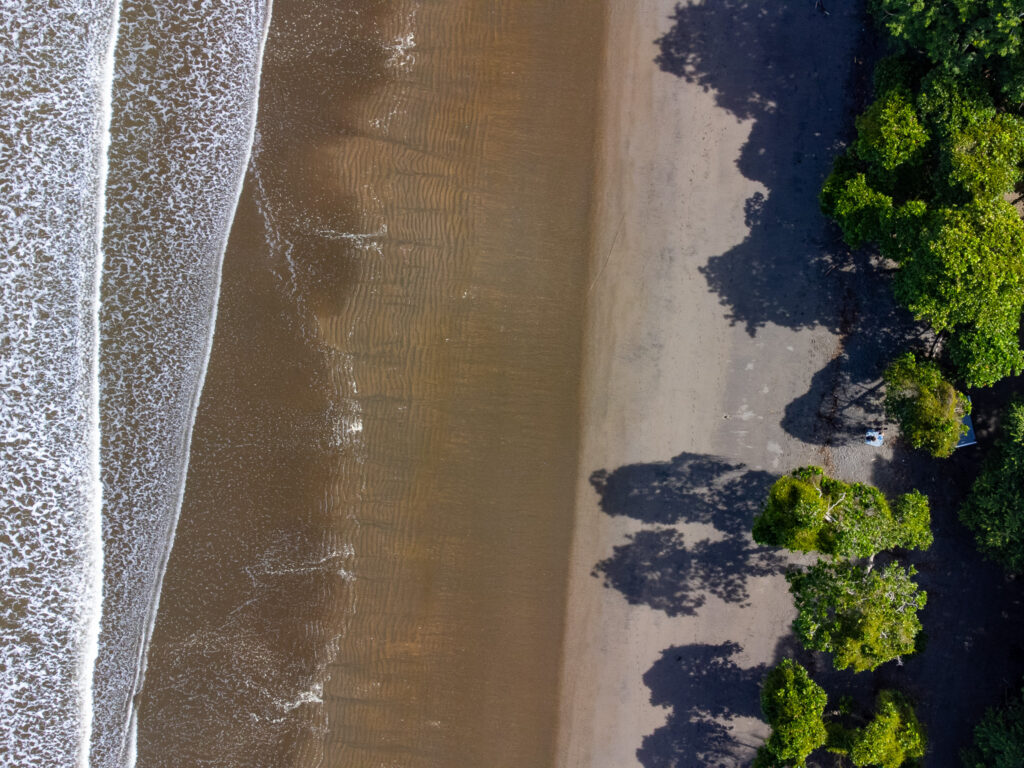
Is it legal to wild Camp in Costa Rica?
Yes, wild camping in Costa Rica is legal, safe and often free! Wild camping, or freedom camping as it’s also known, means you can pitch up for the night literally anywhere – well, almost. Unlike in other countries, you do not need to book into a designated campground and you do not need to stay in official campsites. This means you can stay by the beach, in a rainforest and even by a volcano, without booking ahead of time. Being able to camp anywhere gives you complete freedom to explore every corner of Costa Rica and is one of the best ways to really see what is one of the most biodiverse countries on Earth.
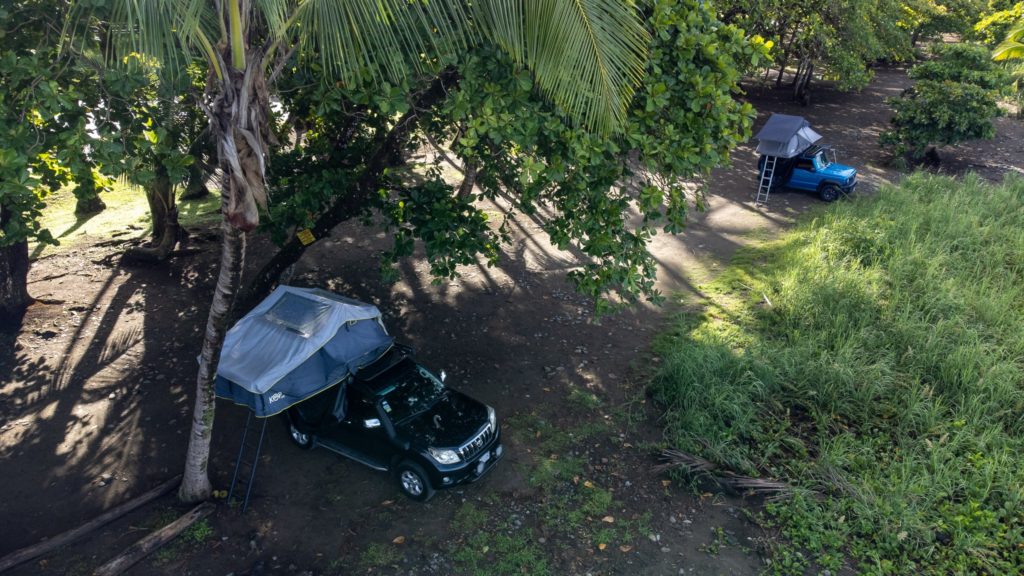
Can you camp anywhere in Costa Rica?
While wild camping in Costa Rica is legal, that doesn’t mean can pitch up anywhere you like. Many areas are private property and it’s still illegal to trespass and camp in these sites. Additionally, many areas that aren’t necessarily privately owned might still have No Camping signs around that forbid campers from pitching up for the night. Car parks and street parking may also have yellow paint or signs up that forbid camping and need to be adhered to. Ignoring signs and staying in forbidden camping areas can land you with a hefty fine, or even involvement from the police, so we wouldn’t recommend you risk it. We’re going to share how to find the best free and paid campsites in a little bit but if in doubt, ask a local if it’s ok to stay in the area you’ve chosen.
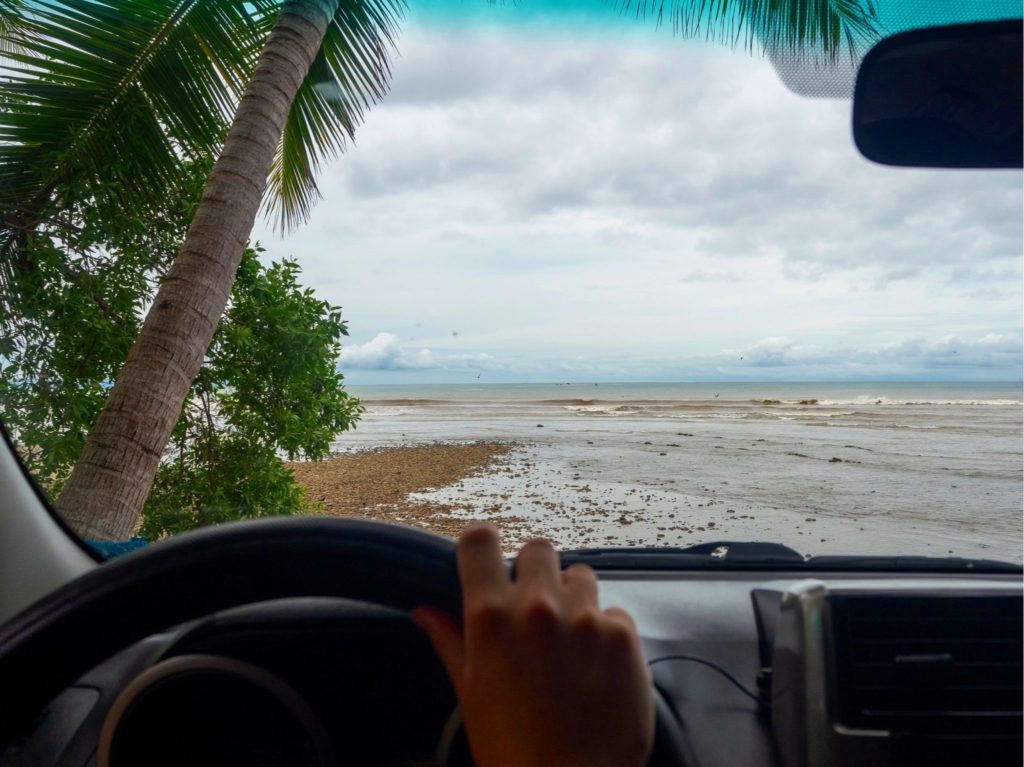
How much does it cost to camp in Costa Rica?
How much it costs to camp in Costa Rica depends on a few variables, including when you visit, where you’re staying and if you take advantage of wild camping. Technically, it is completely free to camp in Costa Rica and you could easily go your whole trip without paying for a single campsite. Realistically, free sites don’t usually have facilities like showers and toilets, and you’re probably going to want to mix it up. Alternating between free and paid sites means you can keep hygiene standards up and have consistent breaks from being totally self-sufficient.
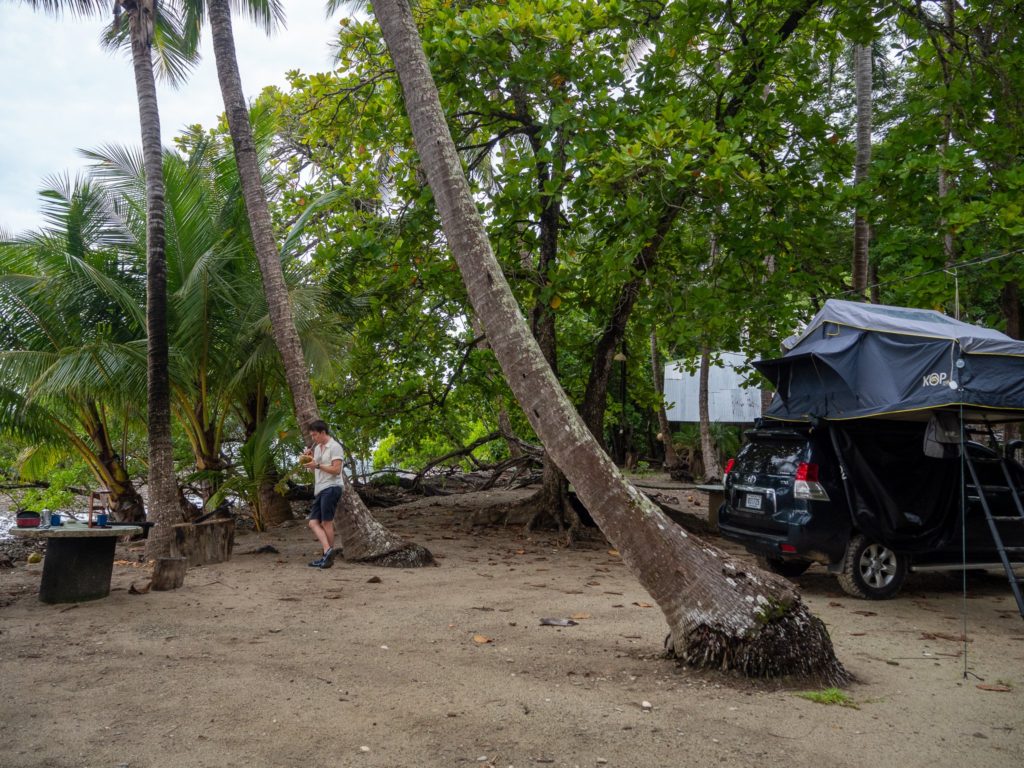
Costa Rica Campsite Prices
Campsites in Costa Rica usually cost between $5 – $10 USD per person, per night, which is around 3000 – 6000 colones. Some sites charge per person, while others charge per vehicle. Many campsite owners prefer to be paid in local currency (and this is the best way to ensure they don’t lose out in the exchange rate), so it’s a good idea to carry cash for this.
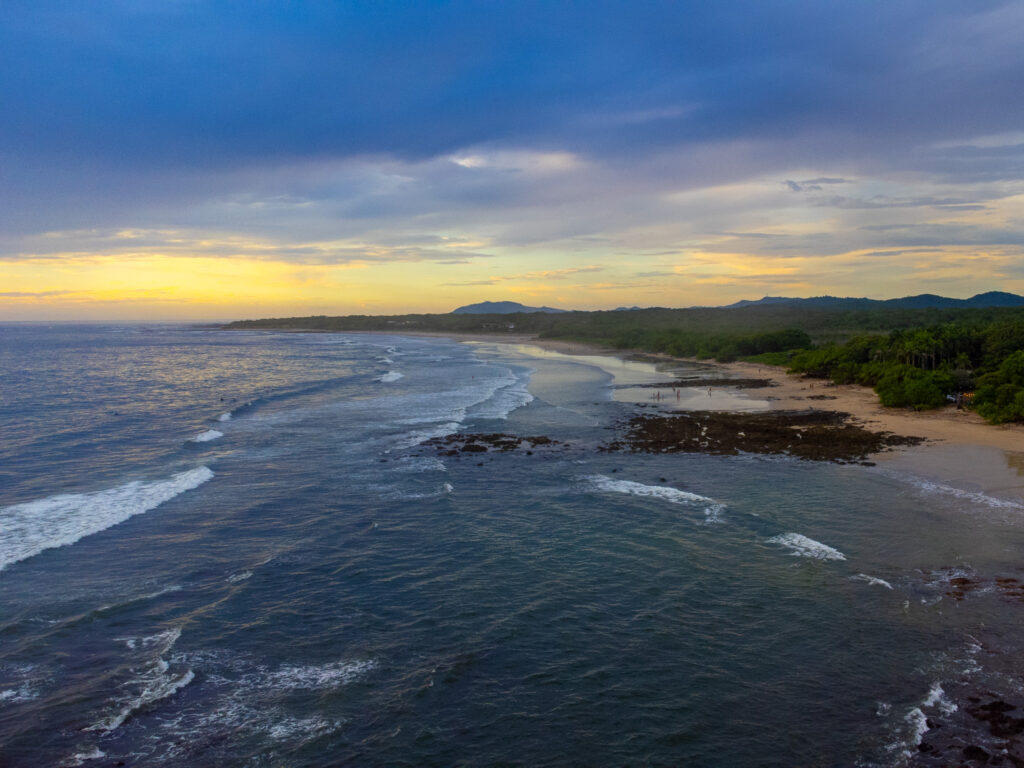
Free camping in Costa Rica
Free camping in Costa Rica means you can literally pitch your tent by the beach and sleep for no cost whatsoever. It’s by far the cheapest way to travel Costa Rica. A car with a roof-top tent can be parked anywhere except on the beach or in forbidden zones. Your main expenses when freedom camping are food, water, equipment for cooking, gas and fuel. There are some designated campsites in Costa Rica which are also free to stay in. These can be flat grassy spaces or sandy areas with few to no facilities. They offer security if other campers are staying there but aren’t owned by anyone asking for a fee.
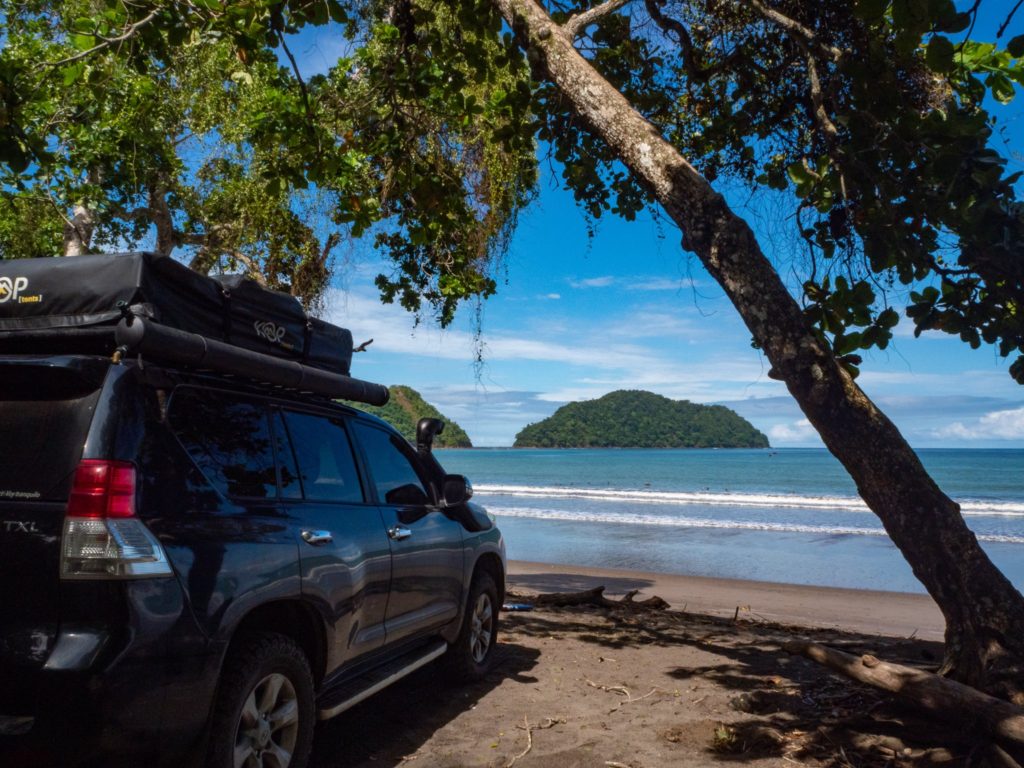
Is it safe to camp in Costa Rica?
You may have heard it’s dangerous to camp in Costa Rica, but this is untrue. It is very safe to camp in Costa Rica, but there are a few things to bear in mind. Many tourists visit Costa Rica without a problem. Crimes against tourists are usually mild and can typically be avoided with good awareness and knowing common scams. While uncommon, petty theft does happen and is the most likely threat you’ll face camping. To deter this, it’s best to always keep valuables out of sight. Staying in managed campgrounds or with other campers can help to alleviate fear and provide an extra sense of security.
Possibly a more real risk to campers is falling foliage. Coconuts and branches often fall from palm trees and can cause damage to your tent, car or yourself if unlucky. It’s a sensible idea to always check where you park up for the night and avoid parking under anything that could fall down in high winds.
Weather changes are common, especially in wet season, so it’s smart to be aware of your surroundings and be prepared for events like flooding. stay up to date with the weather forecast and think ahead when parking up to camp so you are aware of the main risks around you and how to get out in an emergency.
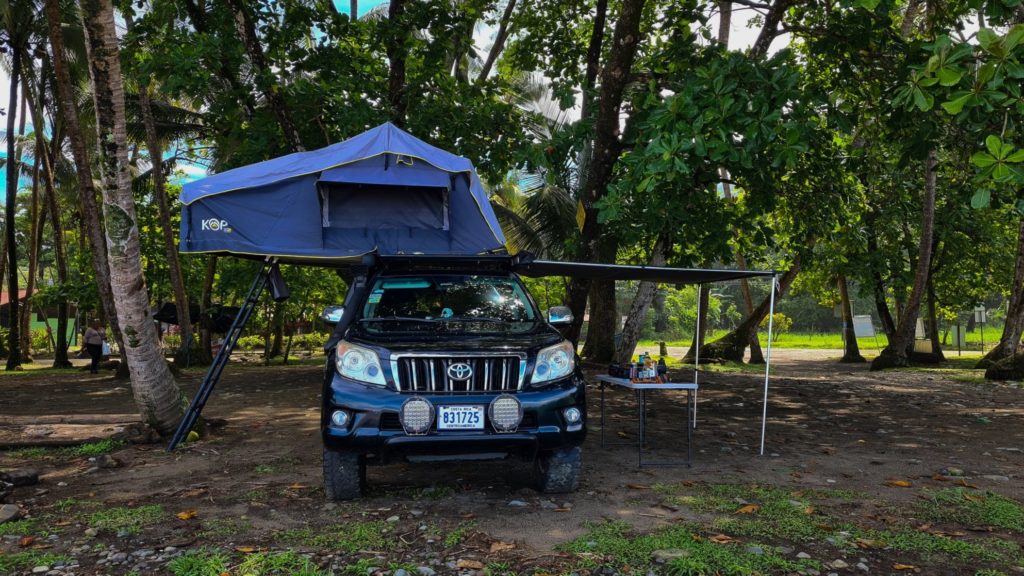
Where to camp in Costa Rica
Camping is brilliant all over Costa Rica. Monteverde is one of the best places to camp in Costa Rica. Campsites in Monteverde tend to have panoramic views of lush cloud forest and provide access to some of the best reserves for birdwatching. Wildlife lovers should also camp in Quepos for Manuel Antonio National Park and La Fortuna for the sloth trails – more on camping around wildlife later in this article!
The Nicoya peninsula is one of the best places to camp in Costa Rica if you’re looking for that tropical beach vibe. Lined with secluded bays and backed by rainforest, the Montezuma coast is home to a variety of free and paid campsites. We stayed in a few Montezuma campsites and enjoyed falling asleep to the sound of the ocean. The Caribbean coastal towns of Cahuita and Puerto Viejo are popular for beach camping too.
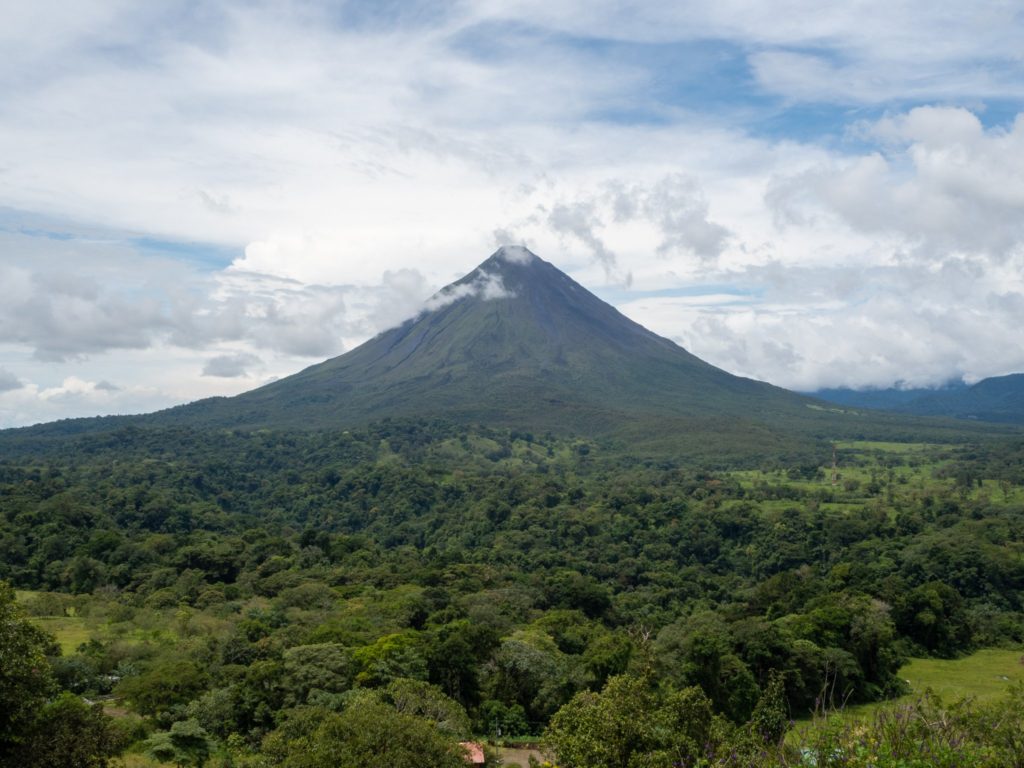
Where is the best place to camp in Costa Rica?
While it’s true that Costa Rica’s camping infrastructure is underdeveloped in comparison to other popular tourist destinations, it’s not true that there are no managed campgrounds. We read before our visit that it would be difficult to find managed campgrounds in Costa Rica but didn’t find this to be the case. You just need to know how to find them. There are some amazing campsites in Costa Rica, which we detail in the next section. The first option for Costa Rica campsites is a paid site. This is an established site that has an owner and manager. These sites usually have more facilities like toilets, hot or cold showers, electricity, and sometimes a communal kitchen, lounge or WiFi. Paid campsites in Costa Rica often need to be arranged ahead of time and it’s useful to have cash as this is often the method of payment upon arrival. An advantage of staying at a paid site is security. They are often gated or private spaces so incidents like petty theft are rare (but still happen so it’s best to always hide valuables). A disadvantage of paid sites is that you need to pay a nightly fee, which varies per site, and the quality of the campground also varies from basic to comfortable.
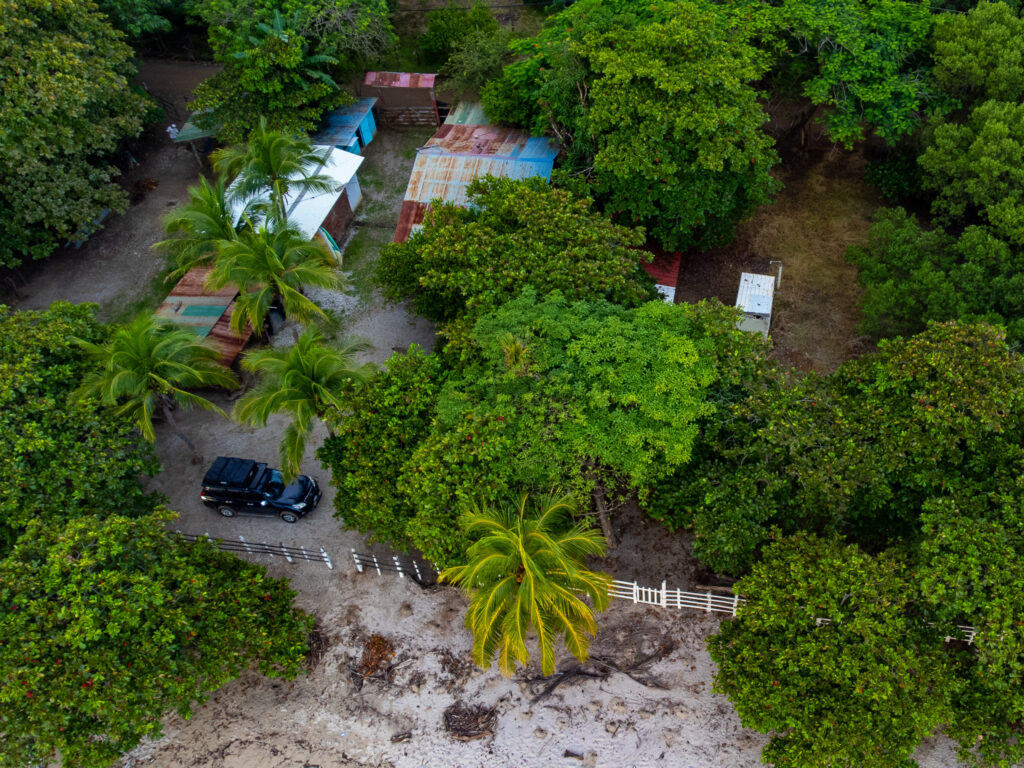
Costa Rica paid campsites vs wild camping
The second option is a free campsite. This is the most affordable way to camp and often means the site is quieter than a paid site too. The third option is to wild camp. These camping options have the advantage that you may have the site all to yourself, but there’s not necessarily going to be anyone around to help in an emergency (if you have an accident, get the car stuck or need medical attention etc.). Paid sites tend to be managed, meaning an owner is onsite. This can give you a better sense of security and safety. Paid sites also tend to have more facilities like toilets, showers and a cooking space than free sites. Paid campsites in Costa Rica are largely owned by locals too, so you know your money is going back into the local community and it’s a great way to combat tourism leakage.
We’d recommend staying in a paid site every second or third night to take advantage of the facilities and maintain hygiene. Batch cooking in a communal kitchen is also a great way to reduce having to cook on your camp stove every night.
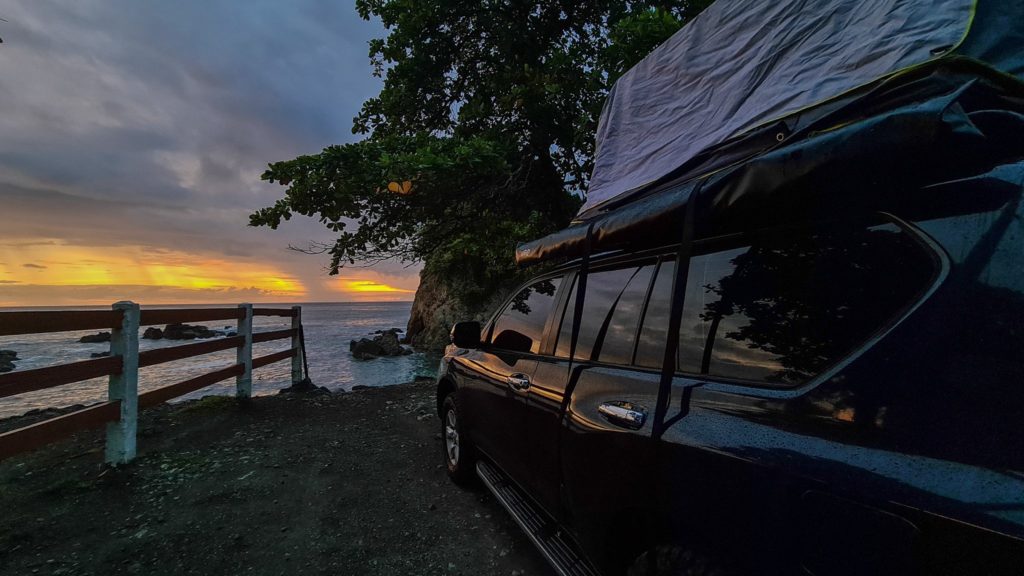
Costa Rica camping map
This is our Costa Rica campsite map of all the sites we researched, stayed at and recommend in this article.
The best Costa Rica camping sites
The best campsites in Costa Rica usually offer stunning views, are conveniently located and have useful facilities. But not all campsites are made the same. While some Costa Rica campsites may be by the ocean or surrounded by wildlife, others can be small, dirty and barren. It’s worth doing a bit of research and compiling a list of all the campsites you’d like to stay at before you go. Luckily for you, we’re thorough researchers and have a long list of the best campsites in Costa Rica to share below.
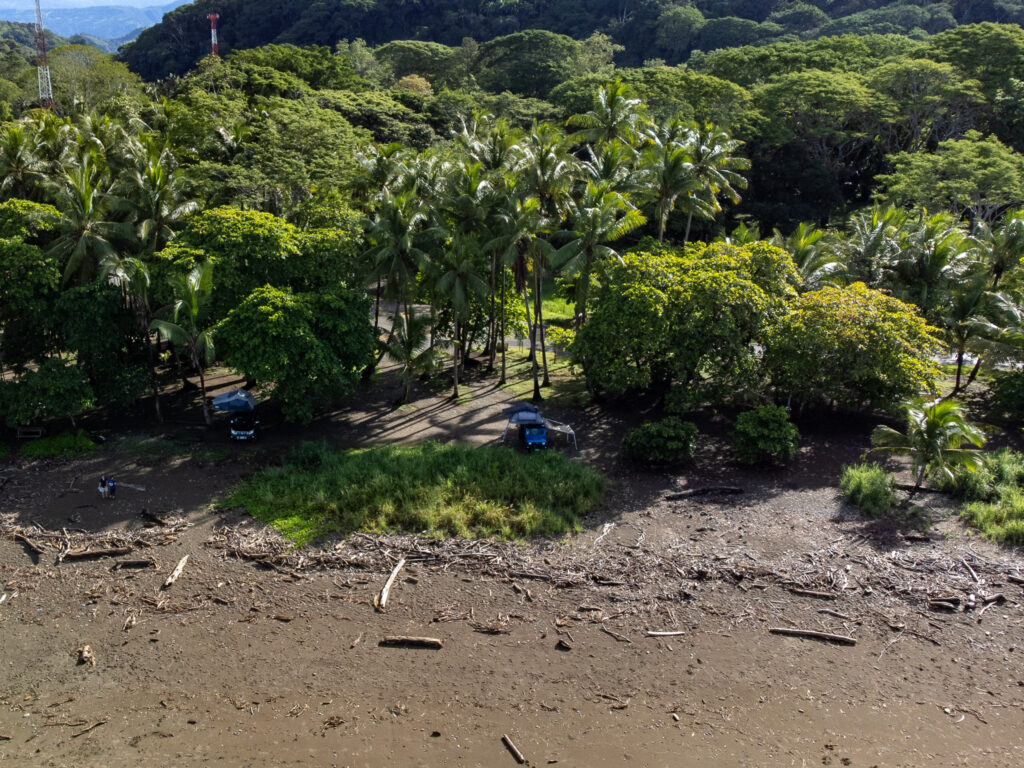
The best beach campsites in Costa Rica
The best free beach campsites in Costa Rica:
- Playa Avellena, Tamarindo
- Playa Coyote, San Francisco de Coyote
- Playa Los Cedros, Montezuma
- Playa Herradura, Jaco
- Playa Dominical, Dominical
- Playa Hermosa, Bahía Ballena (Whale Bay)
- Playa Cocles, Puerto Viejo
- Playa Negra, Cahuita
The best paid beach campsites in Costa Rica:
- Camping Paradise Point, Tamarindo
- Casa Playa Avellanas, Tamarindo
- Mar Azul, Santa Teresa
- Camping Fernando Morales at Playa Cedros, Montezuma
- Camping el Chaman, Uvita
- Ganadito Camping, Drake Bay
- Camping Babsita, Cahuita
- Camping DomMar, Limon
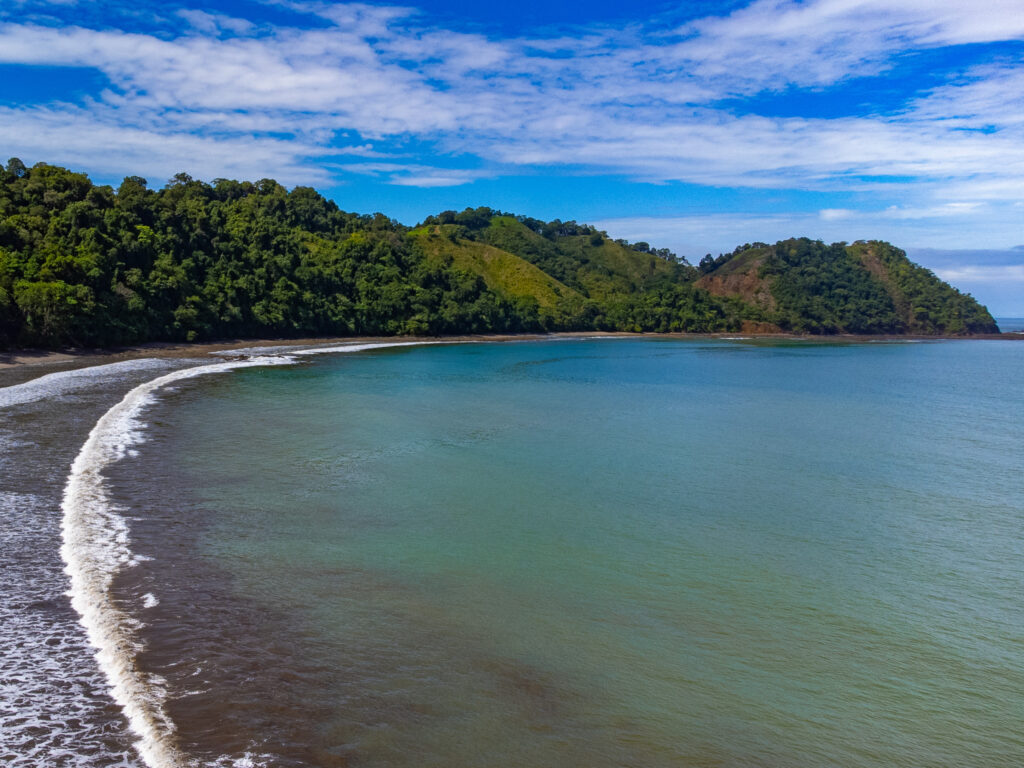
The best campsites in Costa Rica for wildlife
Sloths
The national animal of Costa Rica, almost every visitor to the country has seeing a sloth on their bucket list. Camping near sloth sighting spots can be a great way to maximise your chances of seeing these slovenly but adorable creatures. Some of the best campsites where you can see sloths are located in La Fortuna, Monteverde, Cahuita and Puerto Viejo. We’ve listed a few campsites where sloths have been spotted below:
- Camping Fortuna San Carlos, La Fortuna
- Caribbean Rainforest Sloths, Braulio Carillo National Park
- Reggae Bar and Cabins, Cahuita
- Rockin’ Js, Puerto Viejo
Read next: Where to see Sloths (+ other wildlife) in La Fortuna
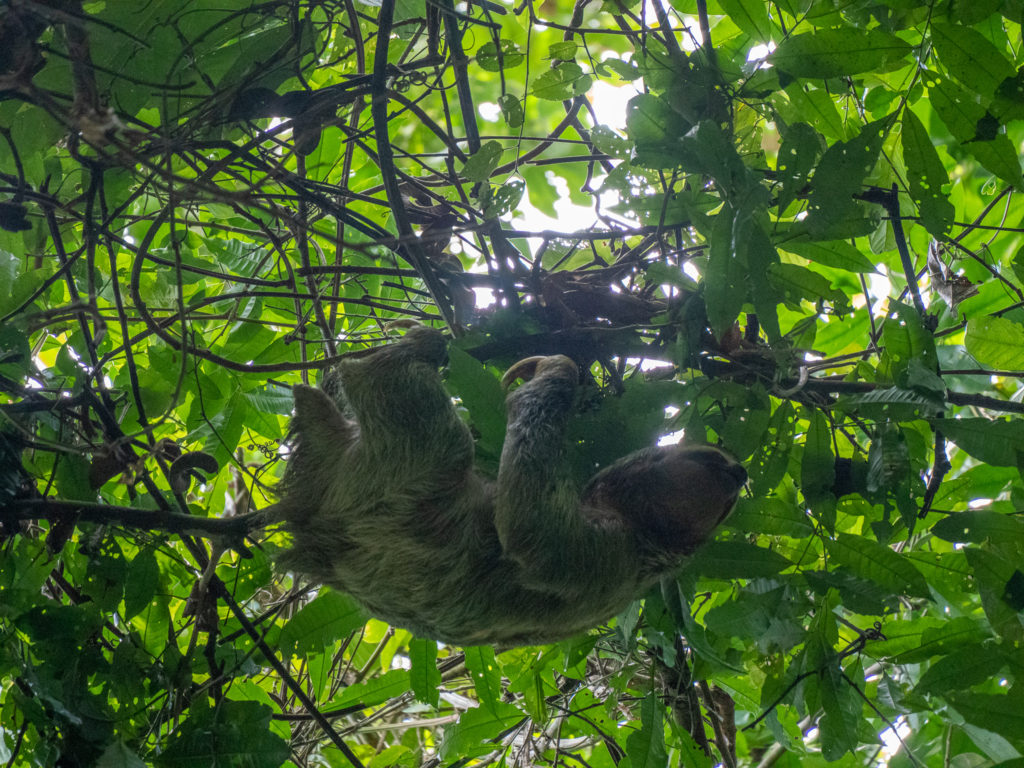
Monkeys
Nothing says ‘Camping in Costa Rica’ more than being woken up by the sound of monkey call – something we experienced when camping in Montezuma. Costa Rica is home to four species of monkey. You’re most likely to hear the deep bellow of a howler monkey which is an effective alarm clock. At Camping Fernando Morales at Playa Cedros, we simply followed the noise for five minutes and found a whole group of howlers right by our campsite. Monkeys have also been spotted at Born To Be Wild Eco Resort & Camping and Trogon’s Birding Lodge. You may hear the screech of a spider monkey, but you’ll need to really listen out for rustling in the trees for the quieter capuchin and squirrel monkeys.
Turtles
Another amazing wildlife spectacle you can experience in Costa Rica is the hatching of baby turtles. Watching these precious animals take their first steps towards the ocean is a rare and magical experience and can be witnessed on both of Costa Rica’s coasts, in Tortuguero and Ostional. The best places to camp in Costa Rica to see baby turtles hatch is at Ostional Camping and Playa Minas (also called Playa Zapotillal).
Whales and dolphins
Our favourite vacation activity, whale watching allows you to get up close to some of the most resilient cetacean species and experience acrobatic displays usually only seen on TV. Costa Rica actually has two whale seasons, a northerly migration and a southerly migration, as well as a year-round population of dolphins. You can sometimes actually see whales and dolphins from the shore! The best places to see whales from your campsite are in Uvita, Bahía Ballena (Whale Bay) and Drake Bay.
Crocodiles
Maybe not the first animal you think of when listing animals in Costa Rica, crocodiles are actually found all throughout the country. They particularly like mangrove areas and estuaries so the best places to see crocodiles are Tárcoles Bridge, the Tamarindo estuary and national parks including Palo Verde and Tortuguero. We woke up to a crocodile floating past our campsite when we stayed at Casa Mango Y Camping. It’s perfectly safe to watch them float by from the camp as it’s behind a concrete wall, so long as you don’t go anywhere near the water. As well as crocodiles, many unique species of bird can be found in the estuary at low tide
Camping in Costa Rica is an amazing experience and wherever you stay, so long as it’s away from urban areas, you’re likely to see a unique animal. Mammals you might spot include agoutis, coatis, kinkajous or raccoons. Birds you can see camping include scarlet macaws, toucans and even quetzals. While wild cats like ocelots, jaguars and pumas can also be seen but are rare.
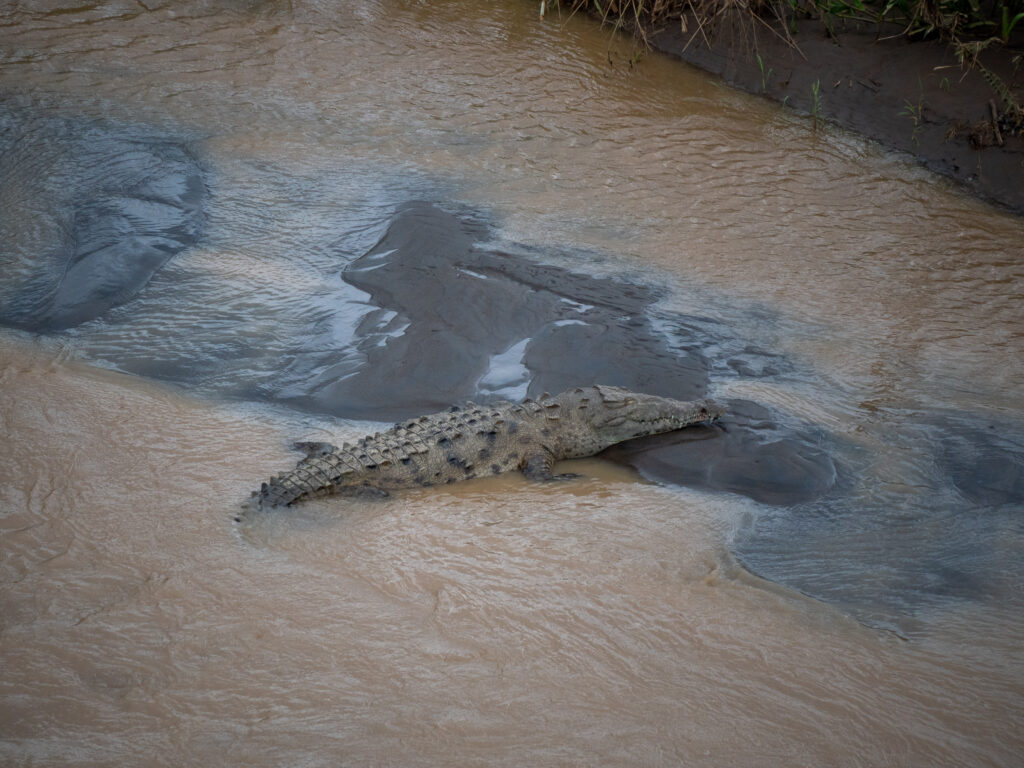
Camping in Costa Rica national parks
Camping in Costa Rica’s national parks is generally not allowed, although there are some exceptions. Staying the night in a national park has several advantages, including a lack of crowds after the park closes, increased chances of wildlife sightings and accessibility for when the park opens. Camping is allowed in designated sites in Corcovado, Santa Rosa, Palo Verde, Marino Ballena and Rincon de la Vieja National Parks.
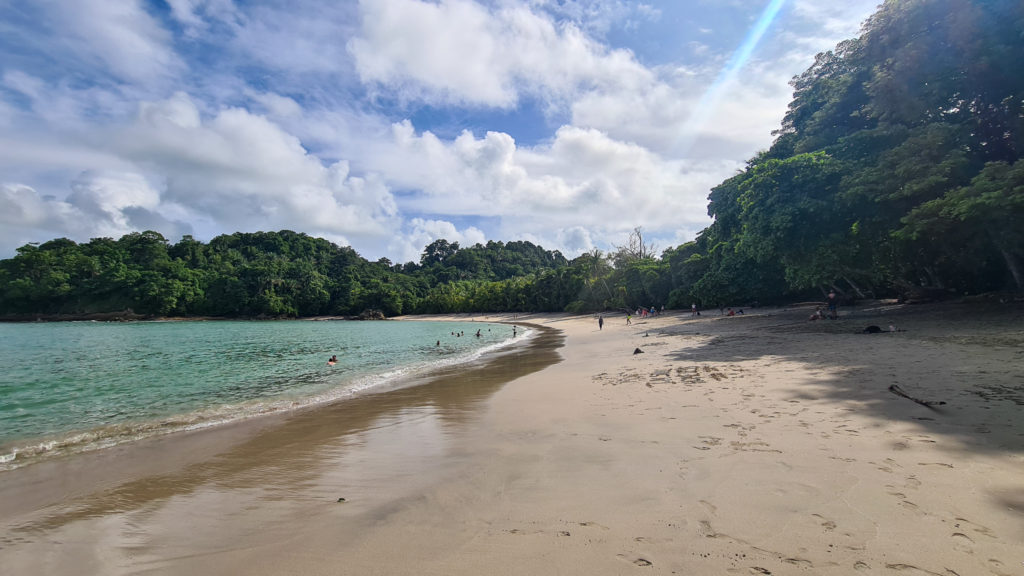
How to find campsites in Costa Rica
iOverlander
The iOverlander app is the holy grail for finding campsites in Costa Rica. It has a database of hundreds of campgrounds, including paid, free, managed and wild camping sites. For each site, you can view the location, photos and reviews left by other campers, as well as a list of facilities available. We’d recommend checking the date of the reviews as sometimes they’re a few years old and information about the sites could have changed. There’s also a handy map function so you can browse all the campsites near you or near the destination you’re travelling to, as well as the ability to star your favourite sites. iOverlander can also be viewed on a web browser.
Google Maps
The iOverlander app isn’t exhaustive so it can be a good idea to cross-reference campsites to check you don’t miss any. We found Google Maps was also useful for finding campsites in Costa Rica. You can search terms like ‘campsite’ and it shows all the campgrounds in the area you’re searching. We found Google Maps had more paid and managed sites than freedom camping grounds, which was useful for the days we wanted to use a shower. Google Maps also often has the link for the website or phone number of the owner so you can easily book ahead too. Again, we’d recommend checking the photos and reviews for information about facilities, price and whether the site is suitable for your vehicle.
Independent Businesses
Often, businesses like hotels, hostels and restaurants will have a camping ground or site that they advertise adjacent to their business. These can’t always be found on the apps mentioned above but are often discoverable through searching for campsites in the destination you’re going to. The advantage of these sites is that you can use facilities like toilets and showers which are often located in the adjoining business.
Branded Maps
When you hire a Nomad America vehicle, you also get access to a list of over 80 campsites that they’ve compiled too, which is very useful. Other car rental agencies or tour companies may also provide you with a map of campsites for your trip.
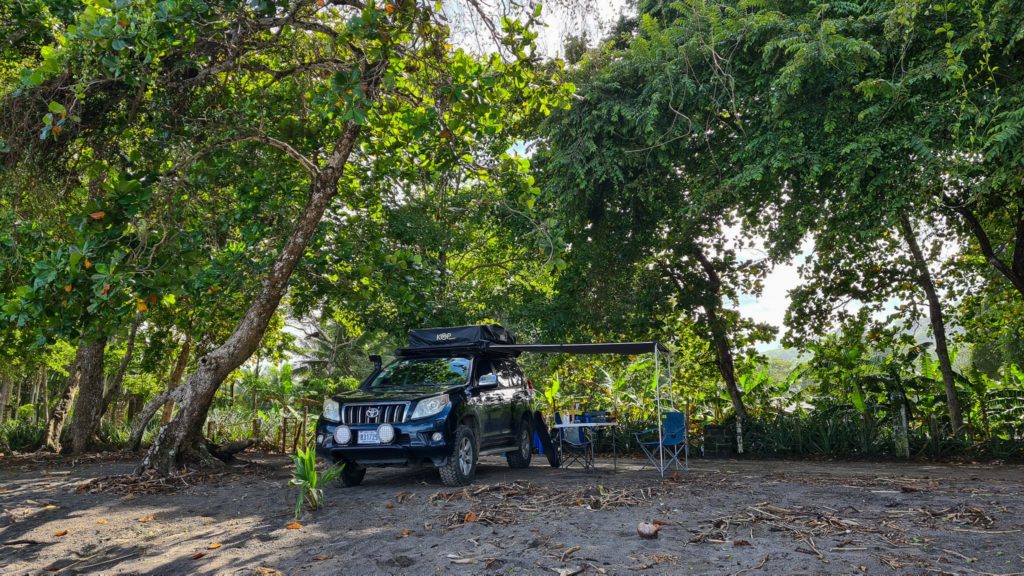
Tent camping in Costa Rica
Camping in a tent in Costa Rica is the most budget-friendly form of accommodation and great for those wishing to save some money. The main disadvantage of tent camping is that you sleep on the floor, which can be terrible for bugs, mud and water, especially in rainy season. It also means you have way less space for daily activities like getting changed or drying clothes and it can be time-consuming setting up and packing away every day.
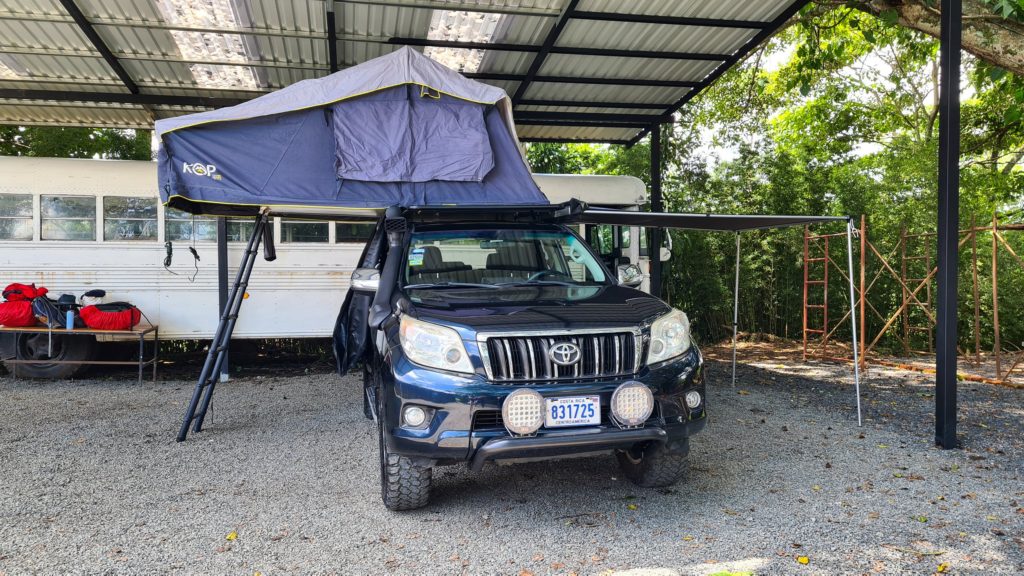
Costa Rica camper rental
Those looking for a step up from camping in a tent should consider camping in a car – and no, we don’t mean just sleeping in the car. You can actually hire a 4×4 car that has been fitted with a spacious roof-top tent and contains all the cooking and cleaning equipment that you might need. We had the best time road-tripping our way around Costa Rica in a camper rental with Nomad America. Not only was camping in the roof-top tent way more comfortable than in one on the floor (not to mention you’re a lot further away from bugs, water and mud), but it gave us complete freedom with our itinerary as it was also our mode of transport.
Read next: Road-tripping Costa Rica in a 4×4 Camper Rental with Nomad America
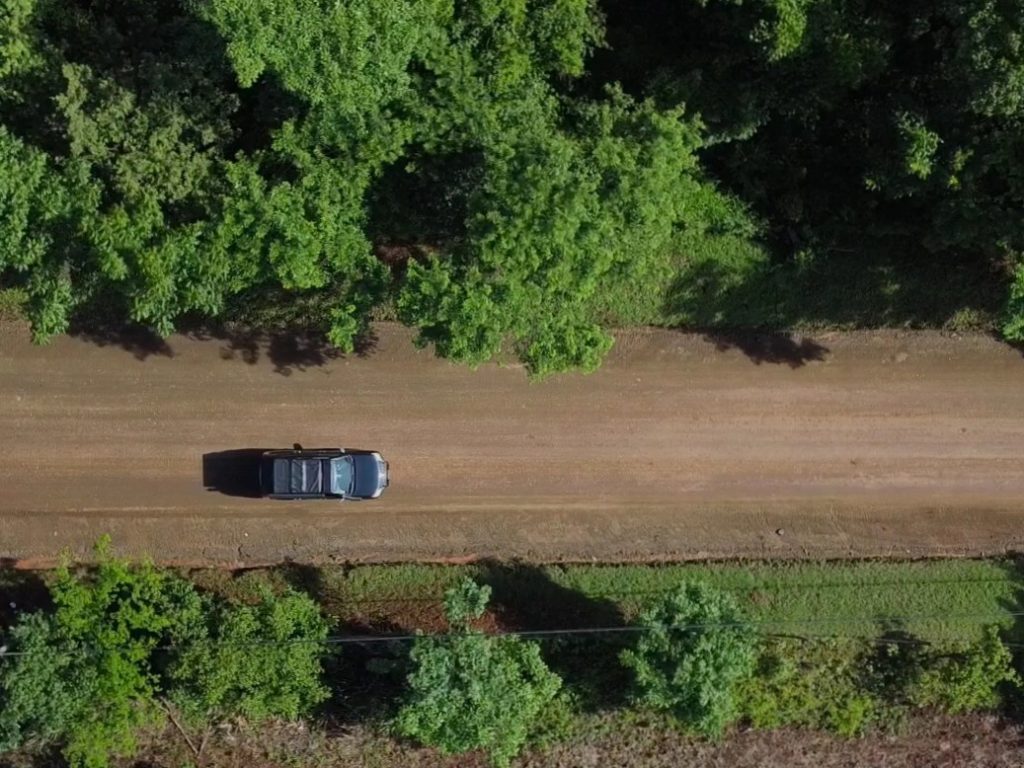
Costa Rica jungle camping
One of the biggest draws to camping in Costa Rica is its vast expanse of tropical jungle. Being surrounded by tropical plant species and the animals that inhabit these areas is a really unique way to spend a night. Jungle camping in Costa Rica is as popular as beach camping. If you’re keen to spend a night in the jungle without needing to camp, we’d recommend checking out glamping accommodation. There are eco-lodges and even glass domes scattered around Costa Rica, offering stunning jungle views. Not only do they offer more comfort than traditional camping, but they also provide better facilities, which can make a nice change from sleeping in a tent. We’ve listed the best glamping accommodation options in Costa Rica below.
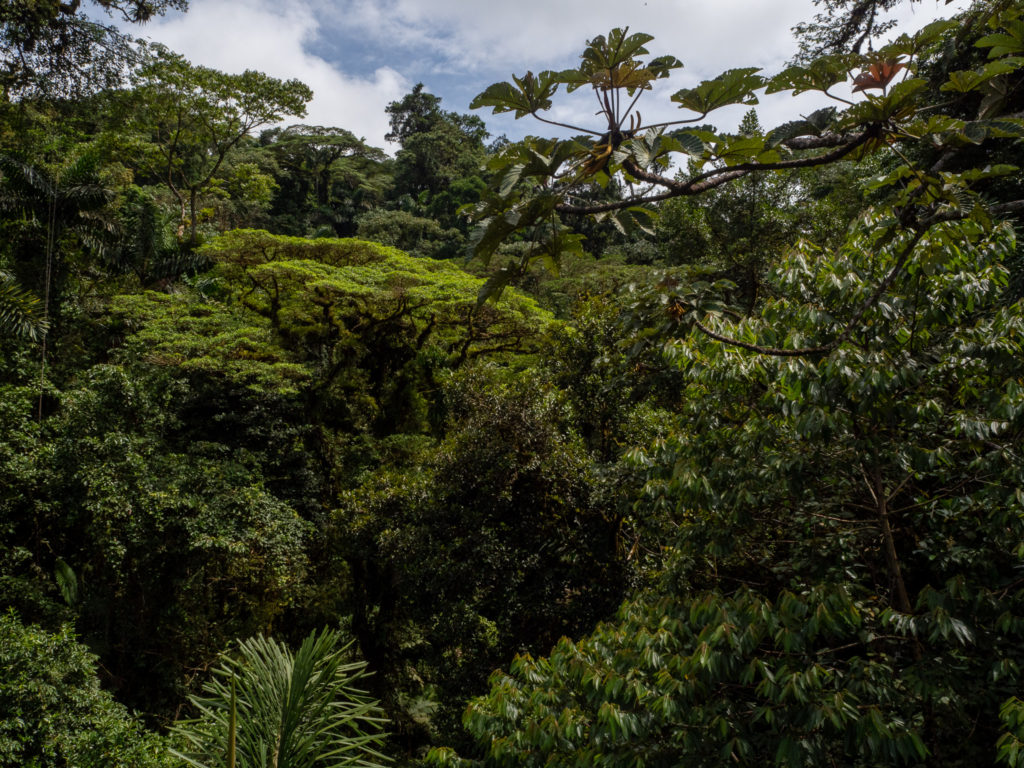
Costa Rica glamping
Glamping is a great way for travellers to experience the joys of camping in Costa Rica with a little more comfort than van life or tenting provides. One of our favourite experiences involved glamping in a whale sanctuary in Mexico and, in Costa Rica, you can have a similar experience. Glamping allows you to be surrounded by nature with the possibility to see some amazing animals, while also being able to sleep in a bed, have access to facilities and enjoy amenities like restaurants and a hot tub. Here are some of the best glamping sites in Costa Rica:
Chira Glamping, Monteverde
Puma Meraki Mountain View, Monteverde
Pura Vista Glamping, La Fortuna
Glamping Jaulares Mountain, San José Province
Isla Chiquita Glamping, Puntarenas
Glamping Tomaselli, Manuel Antonio
Rio Agujitas Eco Farm hostel and Tours, Drake Bay
Seren Glamping, Uvita
Faith Glamping Dome, Manzanillo
Dreamsea Surf & Yoga Camp, Tamarindo
Nomadic Surf Camp, Ballena National Park

Practicalities of Camping in Costa Rica
Water
Water is the most important thing to think about when camping, particularly as Costa Rica can be so hot. Many travellers choose to buy a big bottle of water to keep them going between paid campsites and this can work well if you’re going off grid. But the water in Costa Rica is drinkable so you can get away without the plastic if you carry reusable water bottles. Finding water can be tricky but not impossible. Most campsites, even the free ones, have a drinking water tap. We also found most major attractions and national parks have taps for drinking water too. The iOverlander is a great resource for finding water as it lists all the water refill stations on its map of campsites. Carrying a filter water bottle or UV-purifying water bottle is ideal as you can use it for any water source and it purifies the water so you can be sure what you’re drinking is clean.
Read next: The 15 Best Travel Water Bottles from Companies That Give Back
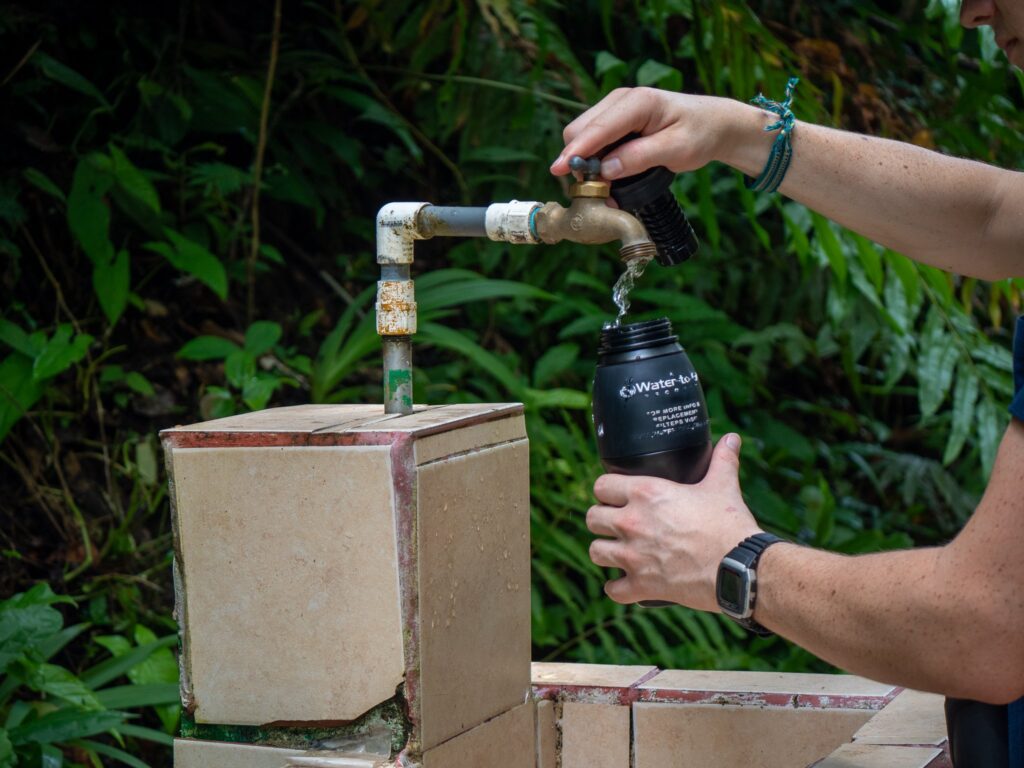
Food
Unless you have a full-on RV, it’s unlikely your camping vehicle is going to have an electric fridge. More likely, you’ll have a coolbox to store your perishable food. Buying bags of ice is a good way to keep food in the container cool. But because Costa Rica is typically quite hot, it can melt quickly. We found ice would last up to two days. It was easy to buy at most grocery stores and a large bag is about 2000 colones( $5 USD).
Space is another issue with not having a transportable full-size fridge. A coolbox can only fit so much food and you may need to shop more frequently than you’re used to at home. This is something you’re going to have to think about as you’ll need to leave room in your itinerary to do a food shop every 2-3 days. Buying food that doesn’t need to be stored in a fridge, like canned goods, is a great way to go longer between shops.
Cooking with a gas stove is easy but reliant upon decent weather. Many paid sites will have some kind of communal kitchen where you can prepare food, which is great if you get a rainy or windy evening. We didn’t have any issues cooking on the gas stove Nomad America provided us with, although it’s a good idea to keep an eye on how much gas you’re using and restock before you run out. Some of our favourite, easy and cheap camping meals include bean quesadillas, tofu Thai curry, lentil bolognese and veggie burgers.
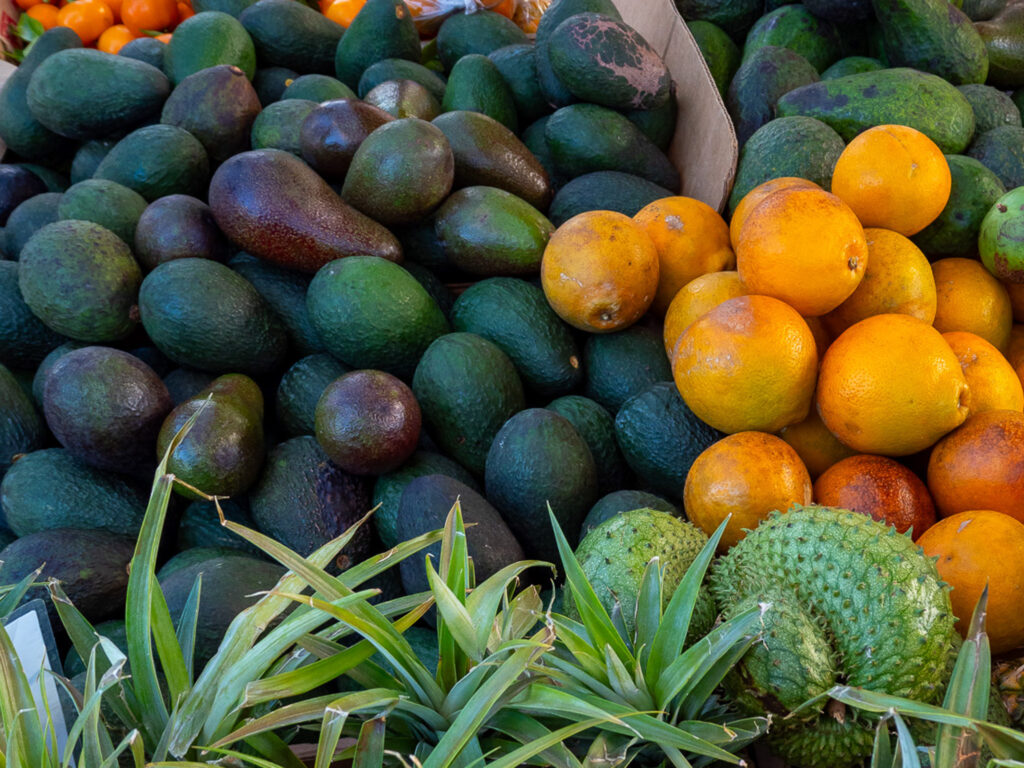
Power
Most campsites in Costa Rica are unpowered, which means there’s no way to connect to the power grid. There are some powered sites which can be booked for those who have an RV that needs to be hooked up each night. Otherwise, it’s easy to manage without. Charging electronic items like phones and cameras is easy via USB or cigarette lighter port in most vehicles. We’d also recommend travelling with a good portable charger which is handy to use when camping as you don’t want to drain the battery of your car. A rechargeable head torch is really handy, and we found Nomad America actually provided us with some lamps and an LED strip.
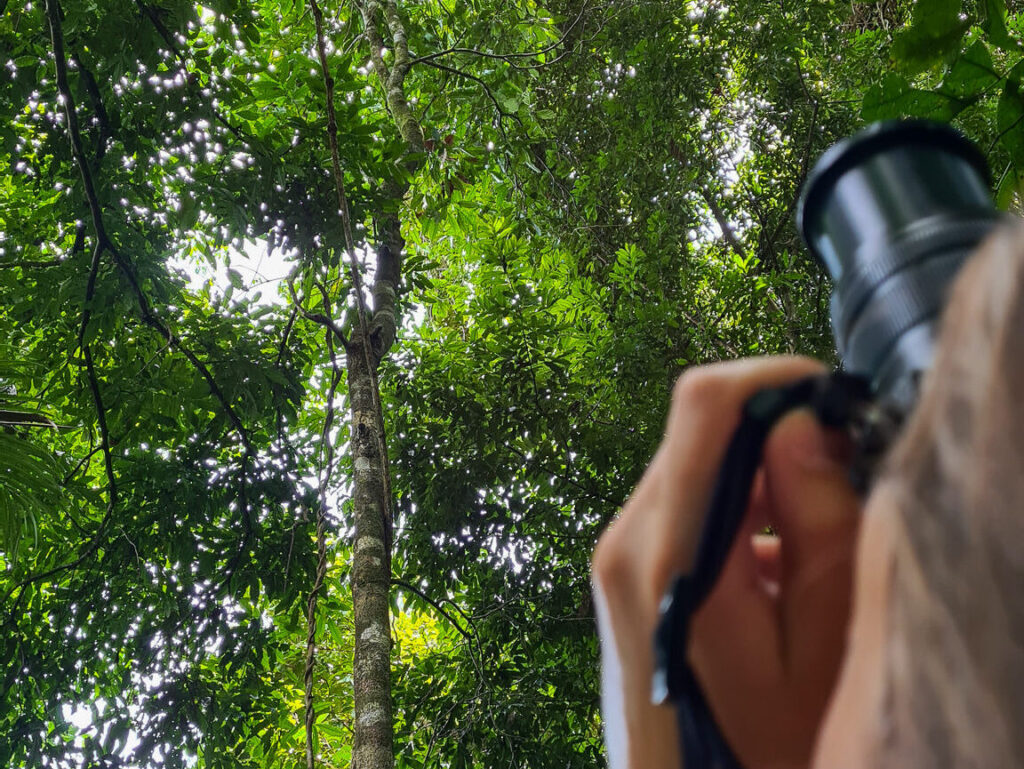
Hygiene
Hygiene standards can fall by the wayside, especially when wild camping. Baby wipes are an essential travel item when camping and can absolve a lot of sins. Most paid sites have at least a cold shower with many offering heated water. It’s a good idea to regularly book into a site with a shower and take advantage of this every few days. If you’re wild camping, taking advantage of shower facilities at public beaches and in national parks is a great way to shower without having to book into a paid site. In an emergency, natural water sources like waterfalls, hot springs and rivers are a great way to clean yourself and your clothing.
Toilets are the most pressing issue and the only way to guarantee having one close-by is to book a paid site each night. We found a way to work around this when wild camping is to plan to be somewhere like a restaurant or gas station at the end of your day so you can use the facilities before setting up the tent. If you’re really desperate, the only option left is to nature wee, just choose your spot carefully to protect the environment from waste.
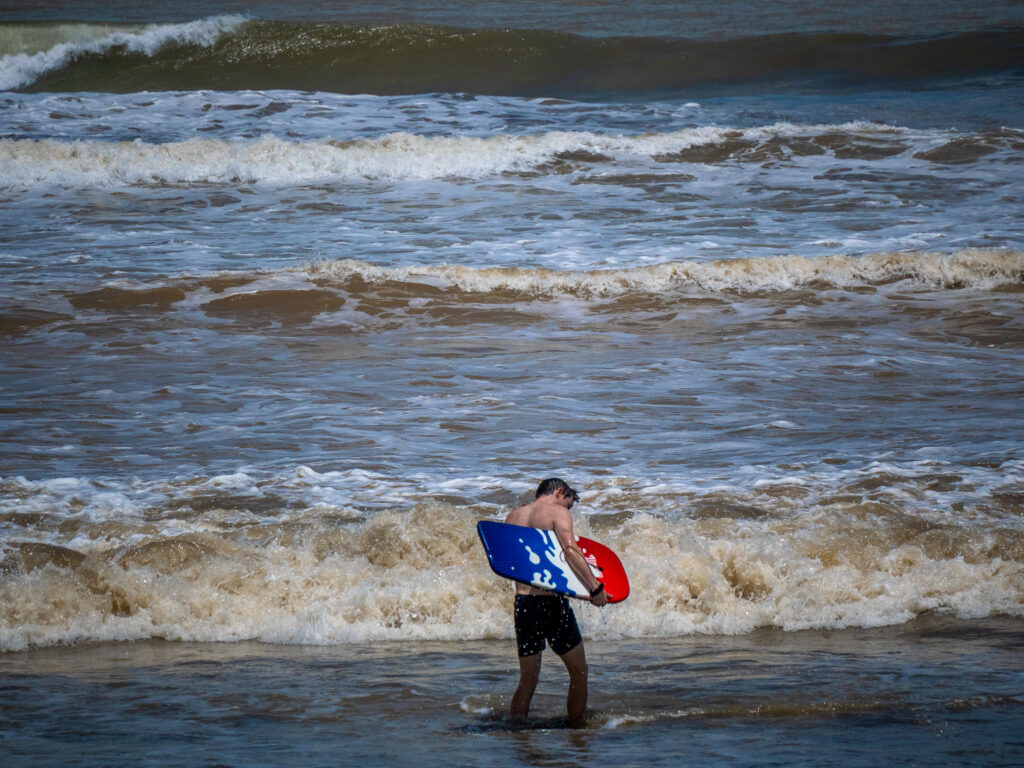
How to camp in Costa Rica
Camping in Costa Rica allows you to be really spontaneous but there are a few things you’ll need to consider. Generally, it’s a good idea to have a rough plan of where you’re going and where you’ll end up each night. Driving in Costa Rica can take much longer than expected and there are a lot of stops you may wish to explore. Knowing where you might be means you can plan to check out a few campsites before it gets dark. It’s best to plan which campsite you think you’ll end up at the morning of or day before you camp there.
In the case of managed or paid sites, it’s best to arrange your spot with the owner one day ahead by phone or email. If you’re travelling off-season, the morning of your stay is usually ok. Campsites can fill up quickly in peak season and you wouldn’t want to arrive only to find there’s no space left.
Another tip for camping in Costa Rica is to have a backup campsite in mind. This is especially important if you’re freedom camping. There are all sorts of reasons your first choice might fall through, including it being closed, all spots being taken, it not being accessible or just not being able to find it. Having a backup site close-by can give you peace of mind and also means you’re not stranded in the middle of nowhere with no campsite after dark.
Other than that, it’s just a case of showing up to a site, pitching your tent and falling asleep under the stars listening to the sounds of the rainforest, or ocean lapping against the beach. Blissful!
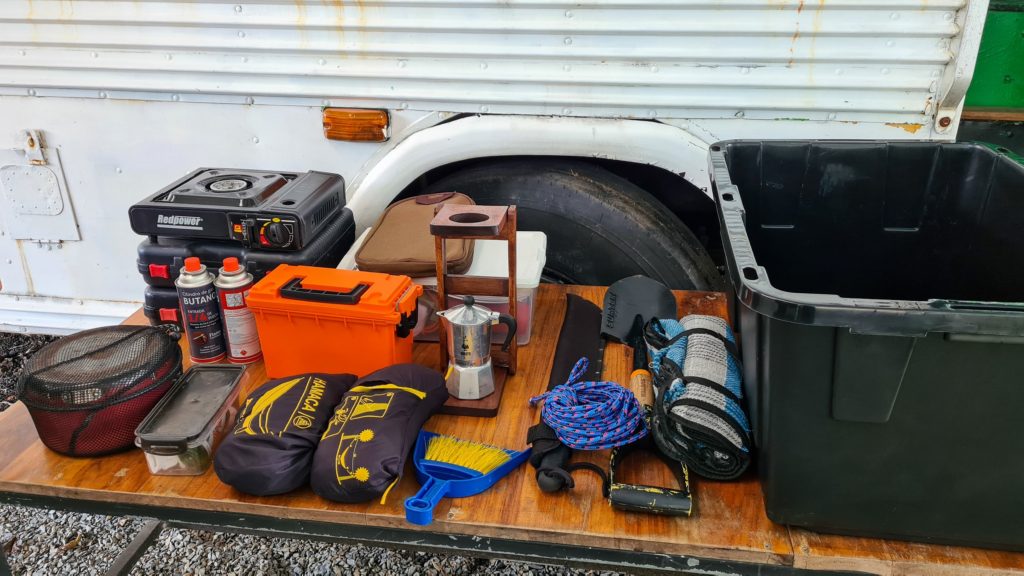
Things you need to know about camping in Costa Rica
Costa Rica’s main roads are in excellent condition, although not the widest roads in the world. Smaller roads can be muddier with lots of potholes. If you’re planning to leave the main tourist areas, it’s highly recommended to have a 4×4. Not only are regular cars usually not insured to go off-road, but they won’t have the clearance needed for all the bumps and challenges like river crossings or floods.
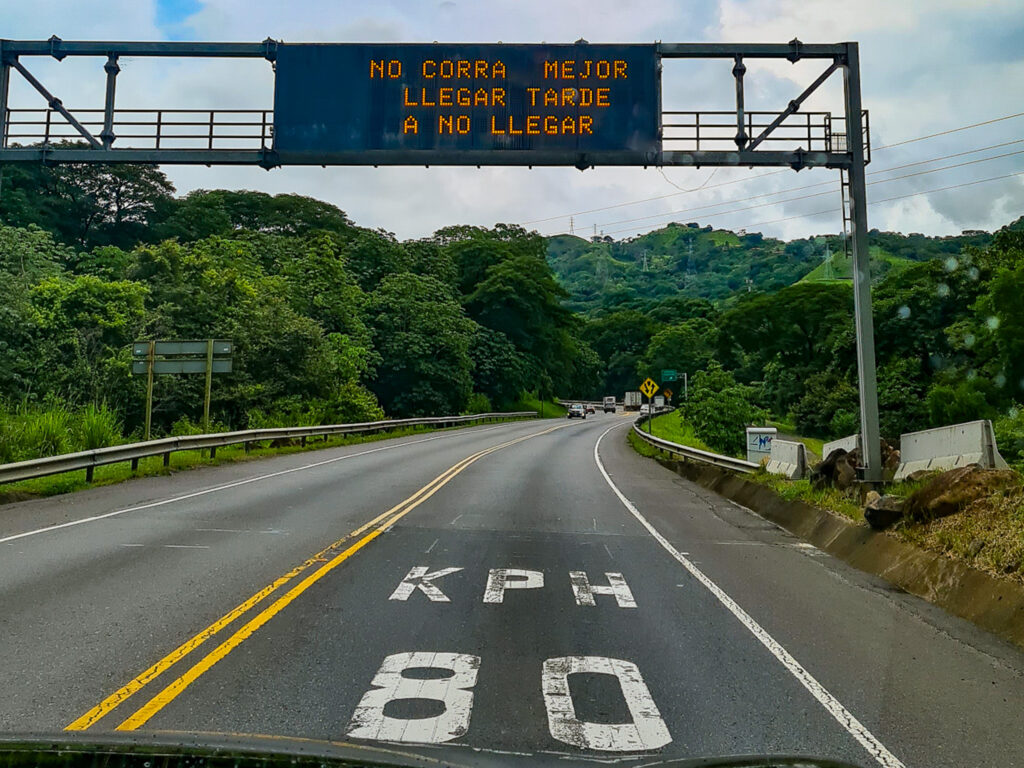
Another thing to consider before camping in Costa Rica is how to stay connected. While one of the benefits of camping is the ability to disconnect from the digital world, it’s important to have a connection in an emergency. Getting a local SIM card is the cheapest option (rather than racking up roaming charges on your home network. The main providers in Costa Rica are Claro, Kolbi and Liberty. We picked up Liberty SIM cards, which is widely regarded to have the best network and strongest signal, from a mall in San Jose at the start of our trip. You need to register your details with your passport to get a phone SIM and the process can be a bit of a pain.
Another option is to buy an e-SIM. This can be done online and doesn’t require going in-store or registering passport details. We recently used Airalo and were really impressed with their data-only e-SIM offers. It’s definitely an easier process than picking up a local SIM. The only drawback is not having the ability to make calls, but most tour companies have a WhatsApp number that you can call so you can kind of get around this. SImOptions and Nomad.
We also had the added benefit that Nomad America provided us with a phone with a local SIM that we could use for the extent of our rental too. Even with a SIM card, you’re still likely to go through areas with patchy to no reception. Downloading Google Maps and Translate offline can be really useful.
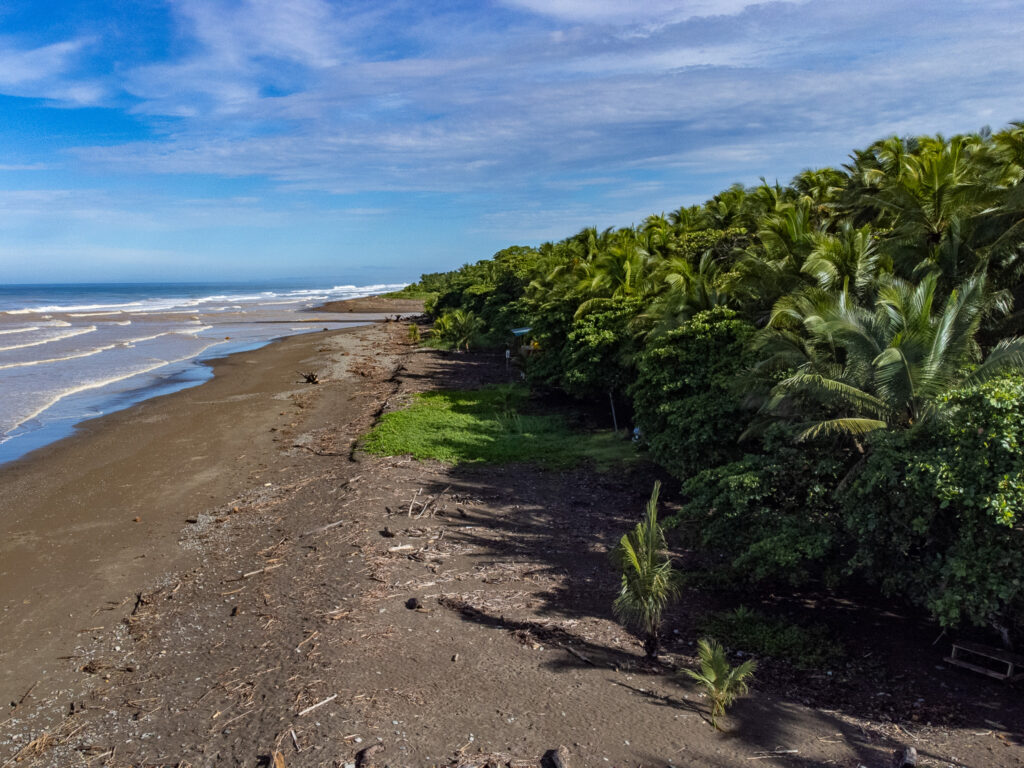
Some travellers to Costa Rica are concerned about safety due to the variety of animals that can be found throughout the country. When camping, you’re unlikely to have any real issues with animals. Occasionally your camp might be host to cheeky raccoons or even curious monkeys but, so long as you give them space and don’t leave out food that can entice them, they’ll move on in their own time. There are some poisonous animals and it’s sensible to use caution in places where critters might be camouflaged (e.g. snakes in grass and scorpions on tree bark). Watching where you step and using a torch at night can give you more awareness of your surroundings. Mosquitoes can be an issue in the warmer lowland areas, particularly around stagnant water sources. Wearing long sleeves and eco-friendly bug repellent is a good way to avoid bites.
Costa Rica is a tropical country and the sun can get very hot. It’s important to wear reef-safe sunscreen, drink plenty of water and spend enough time in the shade.
Most campers in Costa Rica have no problems. But occasionally petty crimes do happen. Always keep valuables out of sight. Trust your gut and, if something doesn’t feel right, move to another campsite. Having a backup for a wild camping spot is a good idea in case you don’t feel safe once you arrive.
Most importantly, enjoy it! Camping in Costa Rica is an invaluable experience and an awesome adventure. However you choose to experience it, have fun!
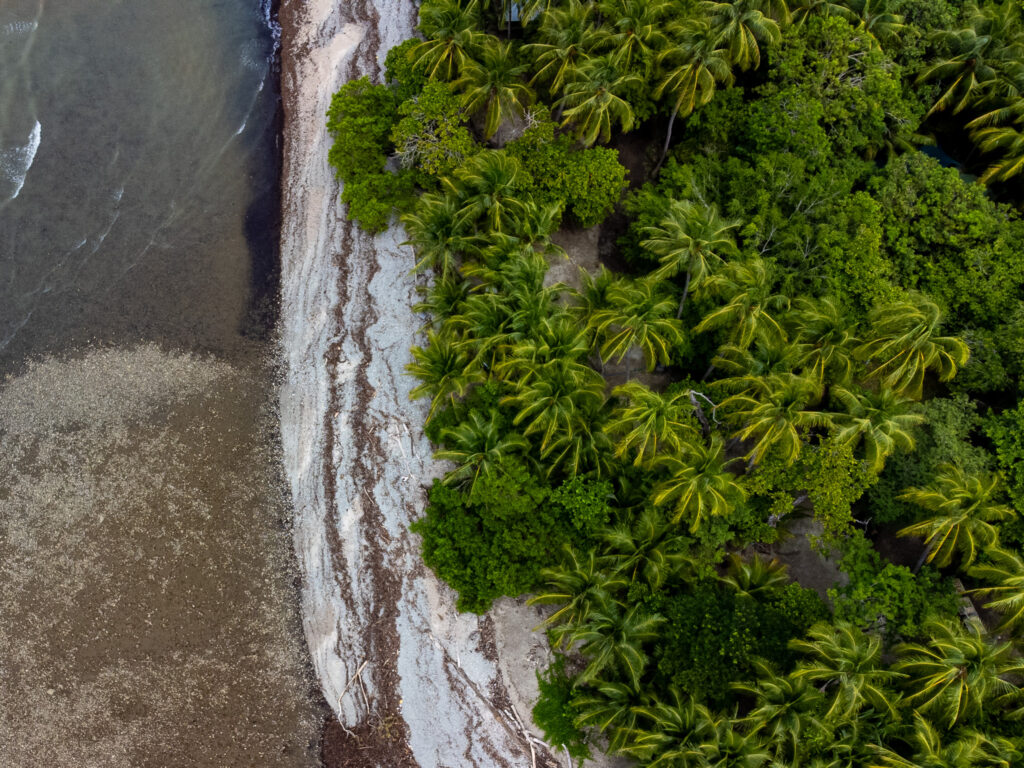
What to Pack for a camp trip in Costa Rica
First, you’ll need the basics like a tent, transport and cooking equipment. Nomad America provided us with all of this so we didn’t have to worry about anything, from gas stoves to chopping knives. We even had a Costa Rican coffee-making device, known as a chorreador, included. Here’s a list of Costa Rica camping gear that’s normally forgotten that we’d recommend packing too:
- Rechargeable headtorch
- Battery pack
- Microfiber towel
- Quick drying clothes
- Swim suit
- Beach shoes that slip on and off easily
- Cap or hat
- Sunglasses
- Eco-friendly sunscreen
- Eco-friendly bug spray
- First aid kit
- Binoculars
- Camera and interchangeable lenses
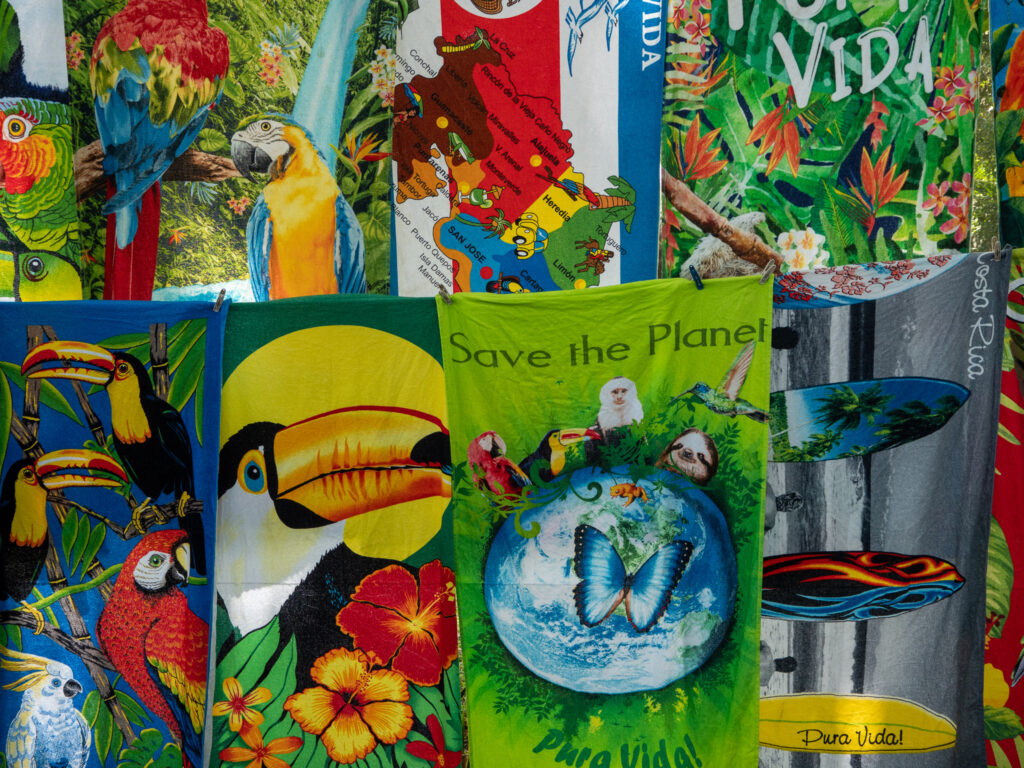
Read next:
Road-tripping Costa Rica in a 4×4 Camper Rental with Nomad America
The 34 Best Things To Do in Monteverde: 1-5 Day Itinerary
Where to see Sloths (+ other wildlife) in La Fortuna
Visiting Manuel Antonio National Park: Everything You Need to Know
